14.6 billion miles away, NASA gets Voyager 1 talking again — and discovers a new mystery
That’s some repair job.
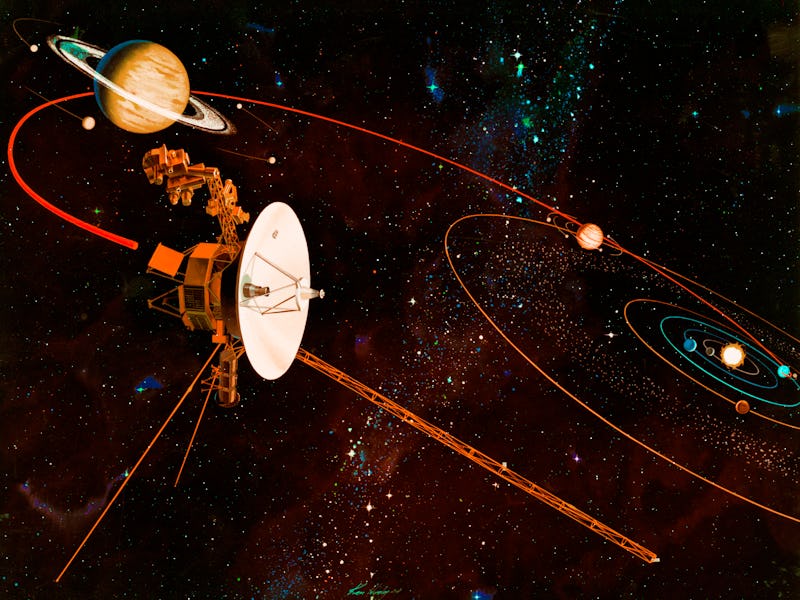
NASA’s Voyager 1 is on a fraught and unknowable journey into deep space. Some 14.6 billion miles from Earth, it and its sister craft, Voyager 2, are the furthest human-made objects from our planet, having made it beyond the edges of the Solar System and out into the interstellar medium. At such distances, anything can go wrong. Add to that the fact that these are old craft: The Voyagers launched in the 1970s. So when Voyager 1 started to send home weird, garbled nonsense instead of telemetry data in May of this year , NASA engineers might have been forgiven for calling it a day and pouring one out for perhaps the most successful space mission of all time.
But that’s not how NASA works . Instead, they started working on a remote diagnosis and fix for the record-breaking spacecraft. Now, some four months later, they are triumphant. Voyager 1 is back online and communicating perfectly with ground control as if it never happened. In fact, the fix turned out to be relatively simple — or as simple as anything can be with a 22-hour communications lag in each direction and billions of miles of space in between.

What happened to Voyager 1?
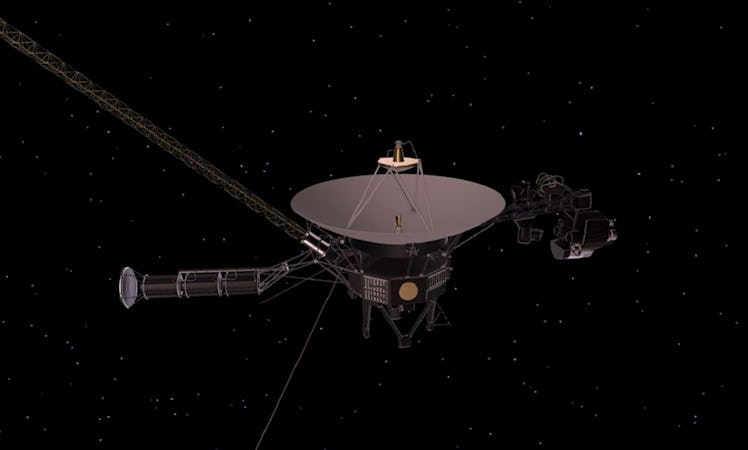
The high-gain antenna, shown on the left in this illustration, is how Voyager 1 sends and receives radio communications with NASA engineers here on Earth.
Cruising in interstellar space, the 45-year-old spacecraft appeared to be operating shockingly well and was transmitting reams of data back to Earth. But in mid-May, Voyager 1’s onboard system responsible for keeping its high-gain antenna pointed at Earth, known as the attitude articulation and control system, or AACS, started beaming home confusing jumbles of data instead of the usual reports about the spacecraft’s health and status. From our viewpoint, it appeared as if the spacecraft had developed something like an electronic version of aphasia — a condition that causes the loss of fluent speech.
“The data may appear to be randomly generated, or does not reflect any possible state the AACS could be in,” explained NASA in a statement from the time.
Even more bafflingly for engineers, Voyager 1 appeared to be in perfect condition despite the spacecraft’s bizarre status reports. The radio signal from the ship remained strong and steady, which meant the antenna was still pointed at Earth — and not in whatever configuration the AACS was claiming it was in to NASA in the reports. Similarly, Voyager 1’s science systems kept gathering and transmitting data as usual, without any of the same strangeness affecting the AACS. And, whatever was wrong with the AACS didn’t trip a fault protection system designed to put the spacecraft in safe mode when there’s a glitch.
Thankfully, NASA engineers diagnosed the problem. And with the diagnosis, they could employ a cure.
The fix — It turned out that the AACS had started sending its telemetry data via an onboard computer that had stopped working years ago. The dead computer corrupted all the outgoing data. All NASA engineers had to do was send the command to the AACS to use the correct computer to send its data home.
But there’s still a problem — The next challenge will be to figure out exactly what caused the AACS to switch computers in the first place. NASA says the system probably received a faulty command from another onboard computer. While they say it is not a major concern for Voyager 1’s well-being right now, the true culprit will need to be found and fixed to prevent future weirdness.
Voyager 1 lives on
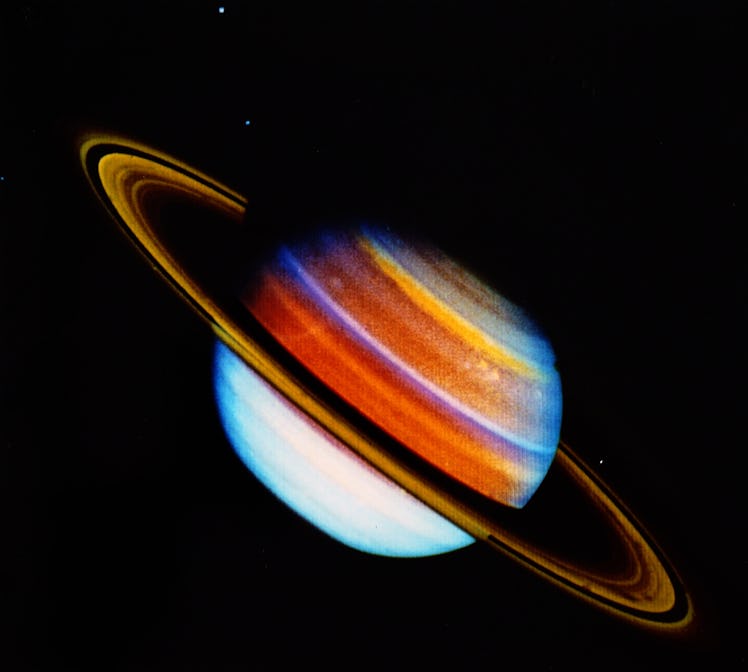
Voyager 1 has yielded revelations about our Solar System no one could have predicted.
Currently, Voyager 1 is more than 23.4 billion kilometers or 14.6 billion miles (and gaining, most of the time ) from Earth. You can watch the distance grow and see both Voyager spacecraft’s current positions in space on NASA’s website .
For the last decade, Voyager 1 has been cruising in interstellar space, beyond the reach of our Sun’s magnetic field. The field had offered the craft a little protection from cosmic rays and other interstellar radiation, much as Earth’s magnetic field offers some protection from high-energy particles and radiation from the Sun. Cosmic rays are known to interfere with electronics here on Earth — when one of those high-speed energetic particles strikes a computer chip, it can cause small memory errors, which add up over time — and it’s reasonable to expect that to be an issue for Voyager 1’s onboard computers, too.
“A mystery like this is sort of par for the course at this stage of the Voyager mission,” said Voyager 1 and 2 project manager Suzanne Dodd in a statement dated to May.
“The spacecraft are both almost 45 years old, which is far beyond what the mission planners anticipated. We’re also in interstellar space — a high-radiation environment that no spacecraft have flown in before.”
We’ll need to wait and see what new perils encounter Voyager next on its travels — and what new discoveries await.
Subscribe for free to Inverse’s award-winning daily newsletter.
This article was originally published on Aug. 31, 2022
- Space Science
Voyager 1 finds a surprise at the edge of the solar system
- Show more sharing options
- Copy Link URL Copied!
Voyager 1, the spacecraft famous for beaming back striking photos of Jupiter, Saturn and their moons more than 30 years ago, has made still another surprising discovery: the existence of an unexpected zone at the very edge of the solar system.
It had been thought that the NASA probe was already passing through the outermost section of the solar system on its way toward the heliopause — the boundary where the solar wind ends and interstellar space begins. For that reason, the existence of yet another district at our cosmic neighborhood’s edge was completely unexpected, said Stamatios Krimigis, a solar physicist at the Johns Hopkins Applied Physics Laboratory in Laurel, Md., and leader of the team that operates Voyager’s low-energy charged particle instrument.
“Nature is imaginative,” he said Monday.
PHOTOS: Images of space
Speaking to reporters from the annual meeting of the American Geophysical Union in San Francisco, Krimigis and former Jet Propulsion Laboratory Director Edward Stone described the newly discovered region as a “magnetic highway” that connects the heliosphere, the bubble surrounding the solar system, to the vast expanse of space beyond.
NASA researchers said in September that they thought that Voyager 1 might pass out of the solar system by the end of the year. As the craft neared the heliopause, scientists expected to detect fewer particles of solar wind and more cosmic rays pouring in from interstellar space. They also expected the magnetic field to change direction.
Since late July, Krimigis said, the intensity of the solar wind particles had decreased a thousand-fold, while cosmic ray intensities rose.
“If we had looked at particle data alone, we would have said, ‘We’re out! Goodbye, solar system!’” he said.
Although they could tell the strength of the magnetic field had increased, Voyager’s instruments never detected the anticipated change in the field’s direction, said Leonard Burlaga, a member of the team that operates Voyager’s magnetometer from NASA’s Goddard Space Flight Center in Greenbelt, Md.
For this reason, he said, “there’s no evidence we’ve entered interstellar space.”
Rather, the highway region, which is created by a magnetic field originating from the southern hemisphere of the sun, appears to allow particles from within the heliosphere to escape into interstellar space while permitting particles from the outside to pour in.
Gary Zank, a space physicist at the University of Alabama-Huntsville, said he wasn’t convinced Voyager 1 was still contained within the solar system and that it would take several months to figure out whether the probe had crossed the heliopause after all.
Different theoretical models predict a different looking boundary, he said. Either way, he said, it was “a major discovery.”
“As ever, Voyager seems to have a remarkable capacity for providing observations that suggest ... we’re almost right,” he said. “It would be nice for the theory and the observations to agree all at once. But it may not ever happen that way.”
Voyager 1 is about 11 billion miles from the sun, making it the most distant man-made object in space, according to NASA. Its twin probe, Voyager 2, is about 9 billion miles from the sun.
Launched in 1977, they are the elder statesmen of the working NASA fleet. Their scientific instruments, which are fueled by radioactive plutonium-238, will begin powering down in 2020 and are expected to stop operating in 2025.
The Voyagers should pass through the heliopause before then.
Stone, who continues to work as a Voyager project scientist at Caltech, said that researchers at NASA think the magnetic highway might be about 5 to 10 astronomical units thick — that is, 5 to 10 times the distance from the Earth to the sun. If they are right, it would take two to three years for Voyager 1 to cross the region, he said.
Then again, Stone cautioned, NASA hadn’t predicted the existence of the highway in the first place, so making precise guesses about when the spacecraft will leave the solar system isn’t really possible — nor is foreseeing exactly what the spacecraft might see on the other side of the bubble.
The magnetic field should still shift direction, Stone said. But he said he thought other details would remain a surprise.
“We won’t know until we finally actually leave the bubble,” he said.
More to Read

Solar storm heading to Earth could disrupt communications and bring northern lights to California
May 10, 2024

Dick Rutan, co-pilot of around-the-world flight, dies at 85
May 8, 2024

After months of silence, Voyager 1 has returned NASA’s calls
April 23, 2024

Eryn Brown previously covered healthcare for the Metro desk. She graduated from Harvard with a degree in history and literature in 1993, and was a writer at Fortune magazine in New York for seven years before moving to Los Angeles. She left The Times in 2015.
More From the Los Angeles Times

Science & Medicine
Millions of Americans need drugs like Ozempic. Will it bankrupt the healthcare system?
May 29, 2024

Sea urchins made to order: Scripps scientists make transgenic breakthrough

Climate & Environment
How a water scientist hopes to save California habitats that could be pumped dry
May 26, 2024
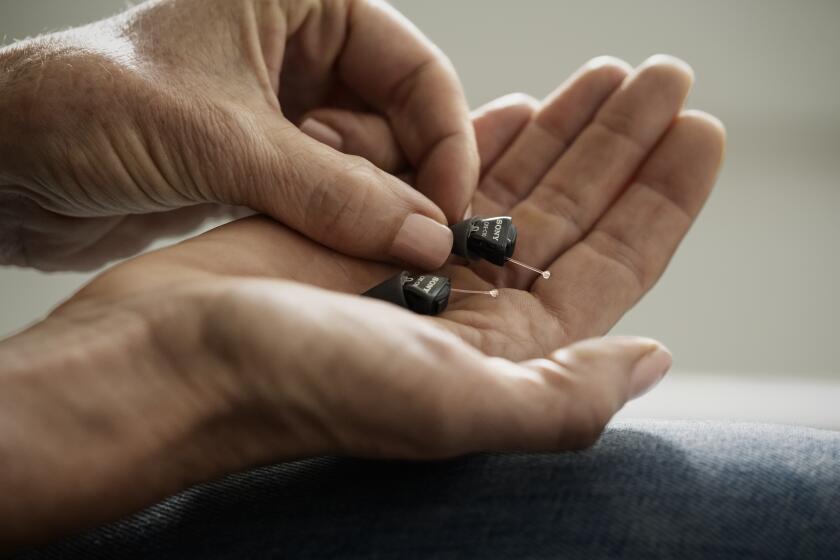
Opinion: Most older Americans who need hearing aids don’t use them. Here’s how to change that
May 23, 2024

- May 29, 2024 | Dusty Dilemmas: NASA’s Curiosity Mars Rover Navigates Rocky Riddles
- May 28, 2024 | Scientists May Have Discovered an Achilles Heel for Hepatitis B
- May 28, 2024 | Challenging Classical Physics: Surprising Properties of Elastic Turbulence Discovered
- May 28, 2024 | Johns Hopkins Scientists Solve 30-Year Biological Mystery of Night Blindness
- May 28, 2024 | Cutting-Edge Phage Research Promises New Solutions for Old Pathogens
NASA’s Deep Space Detective Story Unfolds With Voyager 1
By NASA's Jet Propulsion Laboratory March 16, 2024
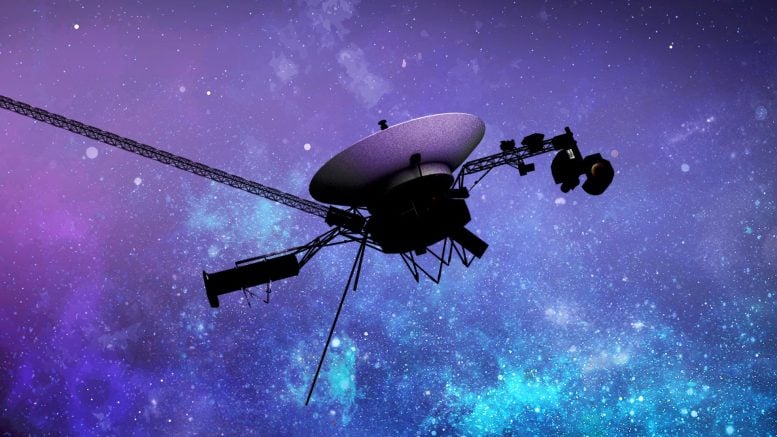
Artist’s illustration of one of the Voyager spacecraft. Credit: Caltech/NASA-JPL
NASA ’s Voyager 1 has been sending non-usable data to Earth since November 2023. Engineers detected unusual signals in March, revealing a full memory readout of the onboard computer, offering clues to resolve the spacecraft’s data transmission issues.
Since November 2023, NASA’s Voyager 1 spacecraft has been sending a steady radio signal to Earth, but the signal does not contain usable data. The source of the issue appears to be with one of three onboard computers, the flight data subsystem (FDS), which is responsible for packaging the science and engineering data before it’s sent to Earth by the telemetry modulation unit.
Discovery of New Data Signal
On March 3, the Voyager mission team saw activity from one section of the FDS that differed from the rest of the computer’s unreadable data stream. The new signal was still not in the format used by Voyager 1 when the FDS is working properly, so the team wasn’t initially sure what to make of it. But an engineer with the agency’s Deep Space Network, which operates the radio antennas that communicate with both Voyagers and other spacecraft traveling to the Moon and beyond, was able to decode the new signal and found that it contains a readout of the entire FDS memory.
Troubleshooting and Analysis
The FDS memory includes its code, or instructions for what to do, as well as variables, or values used in the code that can change based on commands or the spacecraft’s status. It also contains science or engineering data for downlink. The team will compare this readout to the one that came down before the issue arose and look for discrepancies in the code and the variables to potentially find the source of the ongoing issue.
This new signal resulted from a command sent to Voyager 1 on March 1. Called a “poke” by the team, the command is meant to gently prompt the FDS to try different sequences in its software package in case the issue could be resolved by going around a corrupted section.
Because Voyager 1 is more than 15 billion miles (24 billion kilometers) from Earth, it takes 22.5 hours for a radio signal to reach the spacecraft and another 22.5 hours for the probe’s response to reach antennas on the ground. So the team received the results of the command on March 3. On March 7, engineers began working to decode the data, and on March 10, they determined that it contains a memory readout.
The team is analyzing the readout. Using that information to devise a potential solution and attempt to put it into action will take time.
More on SciTechDaily

Megalodon – The Largest Shark That Ever Lived – Could Eat Prey the Size of Entire Killer Whales

Earth and Mars Were Formed From Collisions of Large Bodies Made of Inner Solar System Material
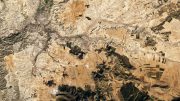
Archaeological Wonderland: Unearthing Orce’s Ancient Secrets Through Fossils
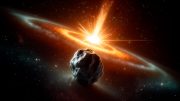
Unprecedented Find in Meteorite Challenges Astrophysical Models
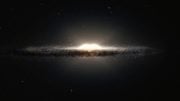
Detailed 3D Map Reveals Peanut Shape of Milky Way’s Inner Regions
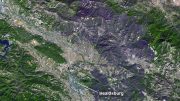
NASA’s Terra Satellite Images California’s Kincade Fire Burn Scar From Space
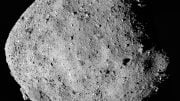
NASA’s OSIRIS-REx Spacecraft Discovers Water on Asteroid Bennu

Preliminary Data Suggests Mixing COVID-19 Vaccines Increases Frequency of Adverse Reactions
1 comment on "nasa’s deep space detective story unfolds with voyager 1".
In the today’s era of expensive and much advanced and with far more powerful electronics space probes that frequently fail, these old “arcaic” space probes have demonstrated their real power is in their roughness and longevity, I feel admiration for those engineers that 40+ yrs ago achieved such sucess with very limited tech most of them being created on the process a real milestone in space exploration!
Leave a comment Cancel reply
Email address is optional. If provided, your email will not be published or shared.
Save my name, email, and website in this browser for the next time I comment.

- The Contents
- The Making of
- Where Are They Now
- Frequently Asked Questions
- Q & A with Ed Stone
golden record
Where are they now.
- frequently asked questions
- Q&A with Ed Stone
Mission Status
Instrument status.

Where are the Voyagers now?
To learn more about Voyager, zoom in and give the spacecraft a spin. View the full interactive experience at Eyes on the Solar System . Credit: NASA/JPL-Caltech
View Voyager
Space Flight Operations Schedule (SFOS)
SFOS files showing Voyager activity on Deep Space Network (DSN)
2024 Tracking Schedule
2023 tracking schedule, 2022 tracking schedule, 2021 tracking schedule, 2020 tracking schedule, 2019 tracking schedule, 2018 tracking schedule, 2017 tracking schedule, 2016 tracking schedule, 2015 tracking schedule, 2014 tracking schedule, 2013 tracking schedule, 2012 tracking schedule, 2011 tracking schedule, 2010 tracking schedule, 2009 tracking schedule, 2008 tracking schedule, 2007 tracking schedule, 2006 tracking schedule, 2005 tracking schedule, 2004 tracking schedule, 2003 tracking schedule, 2002 tracking schedule, 2001 tracking schedule, 2000 tracking schedule, 1999 tracking schedule, 1998 tracking schedule, 1997 tracking schedule, 1996 tracking schedule, 1995 tracking schedule, 1994 tracking schedule.
July 1, 2022
21 min read
Record-Breaking Voyager Spacecraft Begin to Power Down
The pioneering probes are still running after nearly 45 years in space, but they will soon lose some of their instruments
By Tim Folger
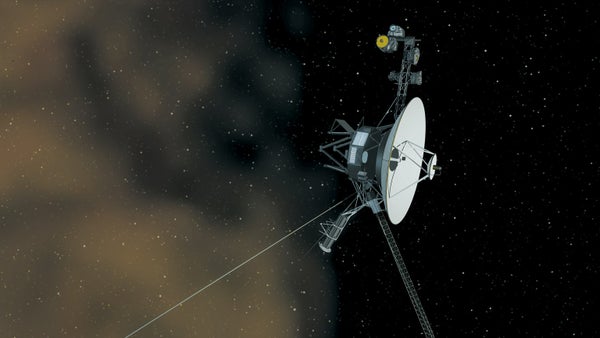
NASA/JPL-Caltech
I f the stars hadn't aligned, two of the most remarkable spacecraft ever launched never would have gotten off the ground. In this case, the stars were actually planets—the four largest in the solar system. Some 60 years ago they were slowly wheeling into an array that had last occurred during the presidency of Thomas Jefferson in the early years of the 19th century. For a while the rare planetary set piece unfolded largely unnoticed. The first person to call attention to it was an aeronautics doctoral student at the California Institute of Technology named Gary Flandro.
It was 1965, and the era of space exploration was barely underway—the Soviet Union had launched Sputnik 1, the first artificial satellite, only eight years earlier. Flandro, who was working part-time at NASA's Jet Propulsion Laboratory in Pasadena, Calif., had been tasked with finding the most efficient way to send a space probe to Jupiter or perhaps even out to Saturn, Uranus or Neptune. Using a favorite precision tool of 20th-century engineers—a pencil—he charted the orbital paths of those giant planets and discovered something intriguing: in the late 1970s and early 1980s, all four would be strung like pearls on a celestial necklace in a long arc with Earth.
This coincidence meant that a space vehicle could get a speed boost from the gravitational pull of each giant planet it passed, as if being tugged along by an invisible cord that snapped at the last second, flinging the probe on its way. Flandro calculated that the repeated gravity assists, as they are called, would cut the flight time between Earth and Neptune from 30 years to 12. There was just one catch: the alignment happened only once every 176 years. To reach the planets while the lineup lasted, a spacecraft would have to be launched by the mid-1970s.
On supporting science journalism
If you're enjoying this article, consider supporting our award-winning journalism by subscribing . By purchasing a subscription you are helping to ensure the future of impactful stories about the discoveries and ideas shaping our world today.
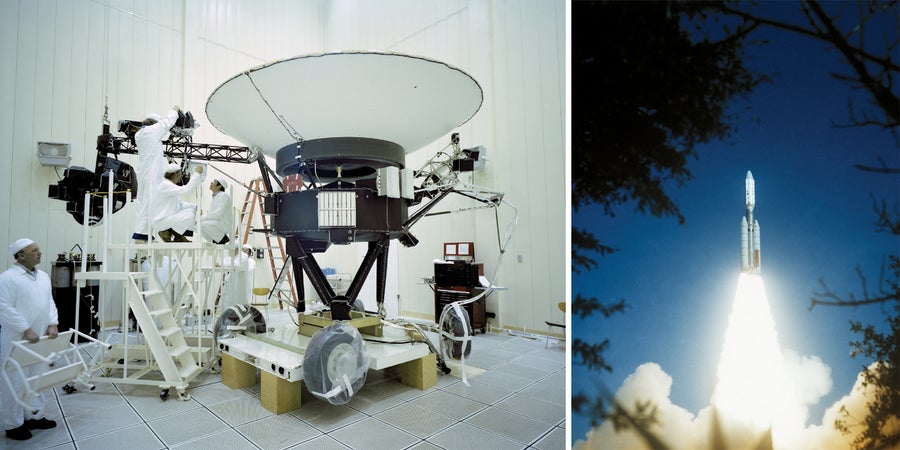
READY FOR LAUNCH: Voyager 2 undergoes testing at NASA’s Jet Propulsion Laboratory before its flight ( left ). The spacecraft lifted off on August 20, 1977. Credit: NASA/JPL-Caltech
As it turned out, NASA would build two space vehicles to take advantage of that once-in-more-than-a-lifetime opportunity. Voyager 1 and Voyager 2, identical in every detail, were launched within 15 days of each other in the summer of 1977. After nearly 45 years in space, they are still functioning, sending data back to Earth every day from beyond the solar system's most distant known planets. They have traveled farther and lasted longer than any other spacecraft in history. And they have crossed into interstellar space, according to our best understanding of the boundary between the sun's sphere of influence and the rest of the galaxy. They are the first human-made objects to do so, a distinction they will hold for at least another few decades. Not a bad record, all in all, considering that the Voyager missions were originally planned to last just four years.
Early in their travels, four decades ago, the Voyagers gave astonished researchers the first close-up views of the moons of Jupiter and Saturn, revealing the existence of active volcanoes and fissured ice fields on worlds astronomers had thought would be as inert and crater-pocked as our own moon. In 1986 Voyager 2 became the first spacecraft to fly past Uranus; three years later it passed Neptune. So far it is the only spacecraft to have made such journeys. Now, as pioneering interstellar probes more than 12 billion miles from Earth, they're simultaneously delighting and confounding theorists with a series of unexpected discoveries about that uncharted region.
Their remarkable odyssey is finally winding down. Over the past three years NASA has shut down heaters and other nonessential components, eking out the spacecrafts' remaining energy stores to extend their unprecedented journeys to about 2030. For the Voyagers' scientists, many of whom have worked on the mission since its inception, it is a bittersweet time. They are now confronting the end of a project that far exceeded all their expectations.*
“We're at 44 and a half years,” says Ralph McNutt, a physicist at the Johns Hopkins University Applied Physics Laboratory (APL), who has devoted much of his career to the Voyagers. “So we've done 10 times the warranty on the darn things.”
The stars may have been cooperating, but at first, Congress wasn't. After Flandro's report, NASA drew up plans for a so-called Grand Tour that would send as many as five probes to the four giant planets and Pluto. It was ambitious. It was expensive. Congress turned it down. “There was this really grand vision,” says Linda Spilker, a JPL planetary scientist who started working on the Voyager missions in 1977, a few months before their launch. “Because of cost, it was whittled back.”
Congress eventually approved a scaled-down version of the Grand Tour, initially called Mariner Jupiter-Saturn 1977, or MJS 77. Two spacecraft were to be sent to just two planets. Nevertheless, NASA's engineers went about designing, somewhat surreptitiously, vehicles capable of withstanding the rigors of a much longer mission. They hoped that once the twin probes proved themselves, their itinerary would be extended to Uranus, Neptune, and beyond.
“Four years—that was the prime mission,” says Suzanne Dodd, who, after a 20-year hiatus from the Voyager team, returned in 2010 as the project manager. “But if an engineer had a choice to put in a part that was 10 percent more expensive but wasn't something that was needed for a four-year mission, they just went ahead and did that. And they wouldn't necessarily tell management.” The fact that the scientists were able to build two spacecraft, and that both are still working, is even more remarkable, she adds.
In terms of both engineering and deep-space navigation, this was new territory. The motto “Failure is not an option” hadn't yet been coined, and at that time it would not have been apt. In the early 1960s NASA had attempted to send a series of spacecraft to the moon to survey future landing sites for crewed missions. After 12 failures, one such effort finally succeeded.
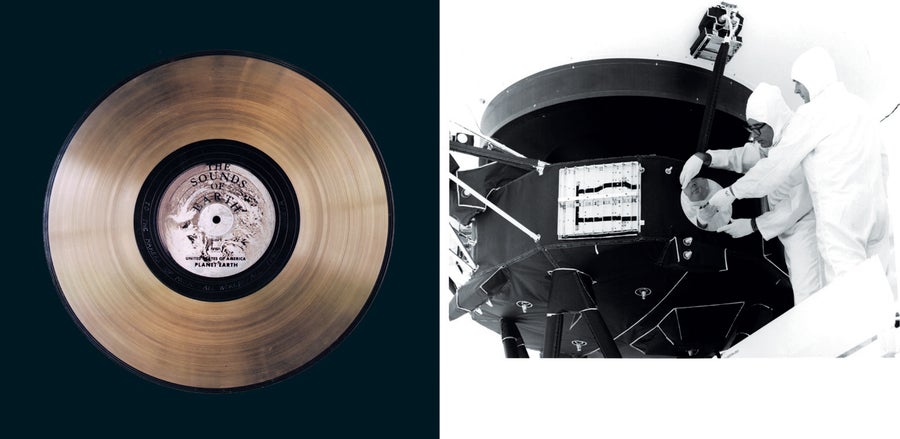
GOLDEN RECORD: Each Voyager carries a golden record ( left ) of sounds and images from Earth in case the spacecraft are intercepted by an extraterrestrial civilization. Engineers put the cap on Voyager 1’s record before its launch ( right ). Credit: NASA/JPL-Caltech
“In those days we always launched two spacecraft” because the failure rate was so high, said Donald Gurnett, only partly in jest. Gurnett, a physicist at the University of Iowa and one of the original scientists on the Voyager team, was a veteran of 40 other space missions. He spoke with me a few weeks before his death in January. (In an obituary, his daughter Christina said his only regret was that “he would not be around to see the next 10 years of data returning from Voyager.”)
When the Voyagers were being built, only one spacecraft had used a gravity assist to reach another planet—the Mariner 10 probe got one from Venus while en route to Mercury. But the Voyagers would be attempting multiple assists with margins of error measured in tens of minutes. Jupiter, their first stop, was about 10 times farther from Earth than Mercury. Moreover, the Voyagers would have to travel through the asteroid belt along the way. Before Voyager there had been a big debate about whether spacecraft could get through the asteroid belt “without being torn to pieces,” McNutt says. But in the early 1970s Pioneer 10 and 11 flew through it unscathed—the belt turned out to be mostly empty space—paving the way for Voyager, he says.
To handle all these challenges, the Voyagers, each about the size of an old Volkswagen Beetle, needed some onboard intelligence. So NASA's engineers equipped the vehicles' computers with 69 kilobytes of memory, less than a hundred thousandth the capacity of a typical smartphone. In fact, the smartphone comparison is not quite right. “The Voyager computers have less memory than the key fob that opens your car door,” Spilker says. All the data collected by the spacecraft instruments would be stored on eight-track tape recorders and then sent back to Earth by a 23-watt transmitter—about the power level of a refrigerator light bulb. To compensate for the weak transmitter, both Voyagers carry 12-foot-wide dish antennas to send and receive signals.
“It felt then like we were right on top of the technology,” says Alan Cummings, a physicist at Caltech and another Voyager OG. “I'll tell you, what was amazing is how quickly that whole thing happened.” Within four years the MJS 77 team had built three spacecraft, including one full-scale functioning test model. The spacecraft were rechristened Voyager 1 and 2 a few months before launch.
Although many scientists have worked on the Voyagers over the decades, Cummings can make a unique claim. “I was the last person to touch the spacecraft before they launched,” he says. Cummings was responsible for two detectors designed to measure the flux of electrons and other charged particles when the Voyagers encountered the giant planets. Particles would pass through a small “window” in each detector that consisted of aluminum foil just three microns thick. Cummings worried that technicians working on the spacecraft might have accidentally dented or poked holes in the windows. “So they needed to be inspected right before launch,” he says. “Indeed, I found that one of them was a little bit loose.”
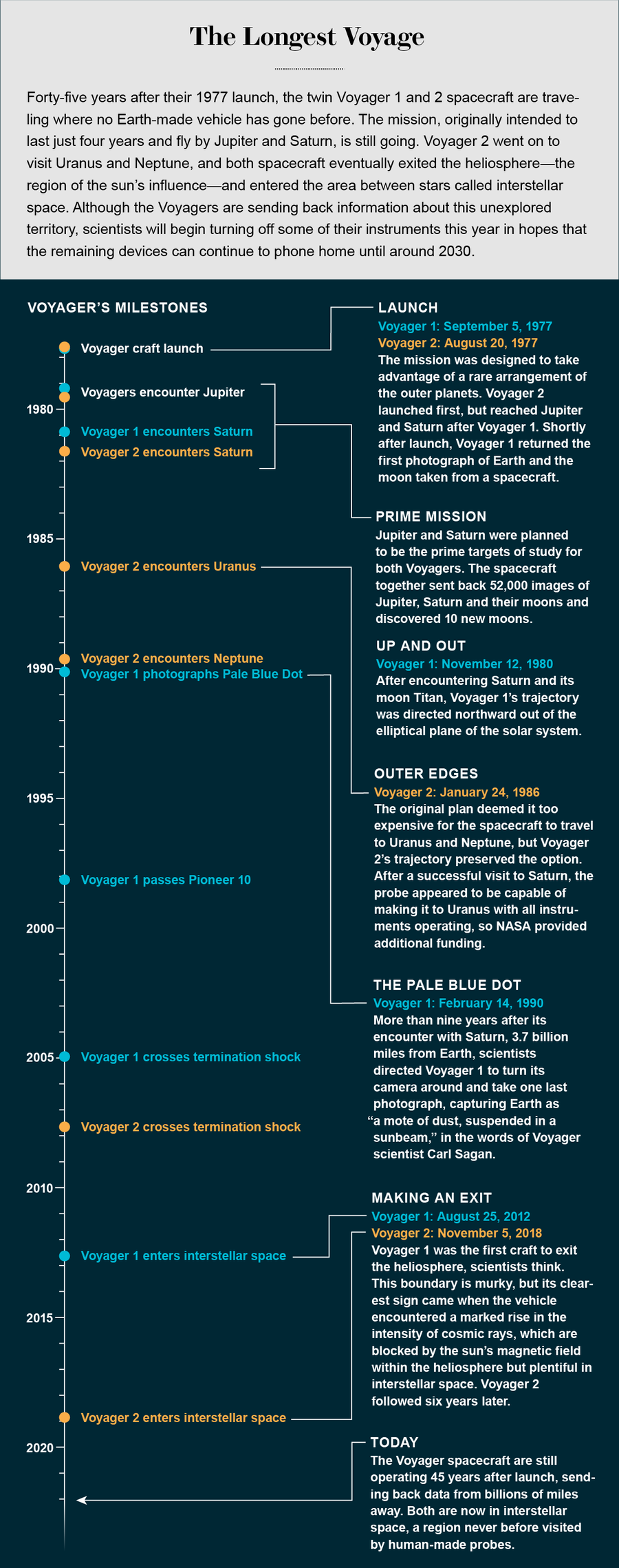
Credit: Graphic by Matthew Twombly and Juan Velasco (5W Infographic); Consultants: John Richardson (principal investigator, Voyager Plasma Science, Massachusetts Institute of Technology, Center for Space Research) and Merav Opher (professor, Department of Astronomy, Boston University)
Voyager 1 reached Jupiter in March 1979, 546 days after its launch. Voyager 2, following a different trajectory, arrived in July of that year. Both spacecraft were designed to be stable platforms for their vidicon cameras, which used red, green and blue filters to produce full-color images. They hardly spin at all as they speed through space—their rotational motion is more than 15 times slower than the crawl of a clock's hour hand, minimizing the risk of blurred images. Standing-room crowds at JPL watched as the spacecraft started transmitting the first pictures of Jupiter while still about three or four months away from the planet.
“In all of the main conference rooms and in the hallways, they had these TV monitors set up,” Spilker says. “So as the data came down line by line, each picture would appear on a monitor. The growing anticipation and the expectation of what we were going to see when we got up really, really close—that was tremendously exciting.”
Cummings vividly recalls the day he caught his first glimpse of Jupiter's third-largest moon, Io. “I was going over to a building on the Caltech campus where they were showing a livestream [of Voyager's images],” he says. “I walk in, and there's this big picture of Io, and it's all orange and black. I thought, okay, the Caltech students had pulled a prank, and it's a picture of a poorly made pizza.”
Io's colorful appearance was completely unexpected. Before the Voyagers proved otherwise, the assumption had been that all moons in the solar system would be more or less alike—drab and cratered. No one anticipated the wild diversity of moonscapes the Voyagers would discover around Jupiter and Saturn.
The first hint that there might be more kinds of moons in the heavens than astronomers had dreamed of came while the Voyagers were still about a million miles from Jupiter. One of their instruments—the Low-Energy Charged Particle [LECP] detector system—picked up some unusual signals. “We started seeing oxygen and sulfur ions hitting the detector,” says Stamatios Krimigis, who designed the LECP and is now emeritus head of the space department at Johns Hopkins APL. The density of oxygen and sulfur ions had shot up by three orders of magnitude compared with the levels measured up to that point. At first, his team thought the instrument had malfunctioned. “We scrutinized the data,” Krimigis says, “but there was nothing wrong.”
The Voyagers' cameras soon solved the mystery: Io had active volcanoes. The small world—it is slightly larger than Earth's moon—is now known to be the most volcanically active body in the solar system. “The only active volcanoes we knew of at the time were on Earth,” says Edward Stone, who has been the project scientist for the Voyager missions since 1972. “And here suddenly was a moon that had 10 times as much volcanic activity as Earth.” Io's colors—and the anomalous ions hitting Krimigis's detector—came from elements blasted from the moon's volcanoes. The largest of Io's volcanoes, known as Pele, has blown out plumes 30 times the height of Mount Everest; debris from Pele covers an area about the size of France.
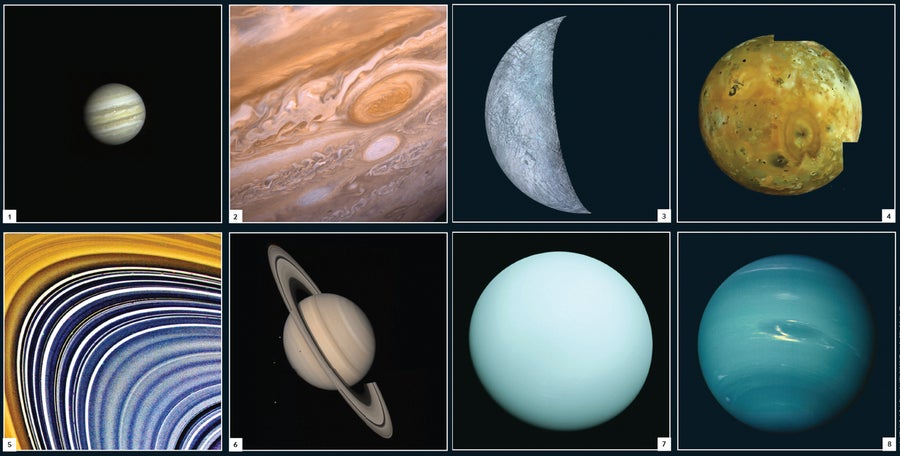
The twin spacecraft took a grand tour through the giant planets of the solar system, passing by Jupiter ( 1 , 2 ) and Saturn ( 5 , 6 ) and taking the first close-up views of those planets’ moons. Jupiter’s satellite Europa ( 3 ), for instance, turned out to be covered with ice, and its moon Io ( 4 ) was littered with volcanoes—discoveries that came as a surprise to scientists who had assumed the moons would be gray and crater-pocked like Earth’s. Voyager 2 went on to fly by Uranus ( 7 ) and Neptune ( 8 ), and it is still the only probe to have visited there. Credit: NASA/JPL ( 1 , 2 , 4 , 5 , 6 , 8 ); NASA/JPL/USGS (3); NASA/JPL-Caltech ( 7 )
Altogether, the Voyagers took more than 33,000 photographs of Jupiter and its satellites. It felt like every image brought a new discovery: Jupiter had rings; Europa, one of Jupiter's 53 named moons, was covered with a cracked icy crust now estimated to be more than 60 miles thick. As the spacecraft left the Jupiter system, they got a farewell kick of 35,700 miles per hour from a gravity assist. Without it they would not have been able to overcome the gravitational pull of the sun and reach interstellar space.
At Saturn, the Voyagers parted company. Voyager 1 hurtled through Saturn's rings (taking thousands of hits from dust grains), flew past Titan, a moon shrouded in orange smog, and then headed “north” out of the plane of the planets. Voyager 2 continued alone to Uranus and Neptune. In 1986 Voyager 2 found 10 new moons around Uranus and added the planet to the growing list of ringed worlds. Just four days after Voyager 2's closest approach to Uranus, however, its discoveries were overshadowed when the space shuttle Challenger exploded shortly after launch. All seven of Challenger 's crew members were killed, including Christa McAuliffe, a high school teacher from New Hampshire who would have been the first civilian to travel into space.
Three years later, passing about 2,980 miles above Neptune's azure methane atmosphere, Voyager 2 measured the highest wind speeds of any planet in the solar system: up to 1,000 mph. Neptune's largest moon, Triton, was found to be one of the coldest places in the solar system, with a surface temperature of −391 degrees Fahrenheit (−235 degrees Celsius). Ice volcanoes on the moon spewed nitrogen gas and powdery particles five miles into its atmosphere.
Voyager 2's images of Neptune and its moons would have been the last taken by either of the spacecraft had it not been for astronomer Carl Sagan, who was a member of the mission's imaging team. With the Grand Tour officially completed, NASA planned to turn off the cameras on both probes. Although the mission had been extended with the hope that the Voyagers would make it to interstellar space—it had been officially renamed the Voyager Interstellar Mission—there would be no photo ops after Neptune, only the endless void and impossibly distant stars.
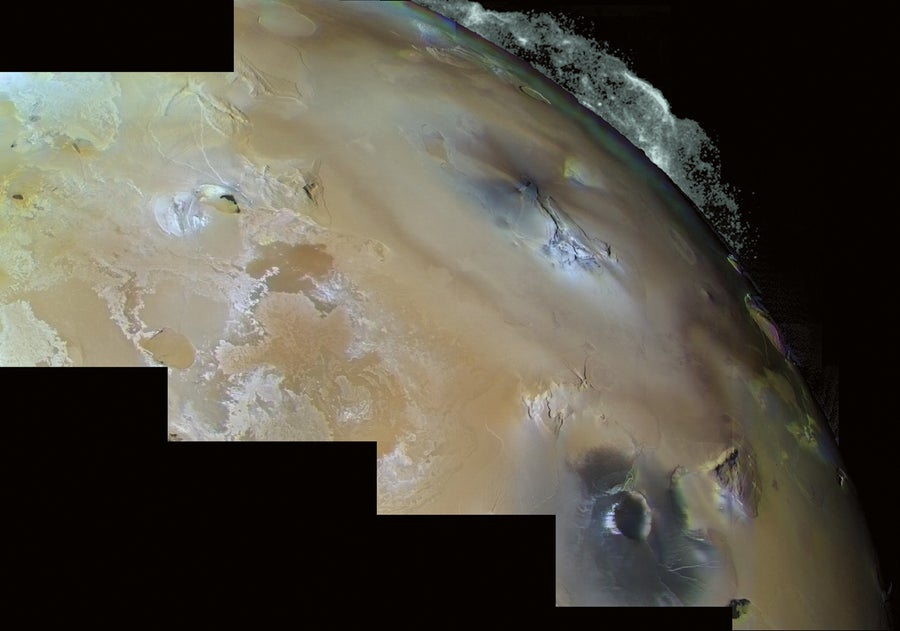
ERUPTION: The discovery of the volcano Pele, shown in this photograph from Voyager 1, confirmed that Jupiter’s moon hosts active volcanism. Credit: NASA/JPL/USGS
Sagan urged NASA officials to have Voyager 1 transmit one last series of images. So, on Valentine's Day in 1990, the probe aimed its cameras back toward the inner solar system and took 60 final shots. The most haunting of them all, made famous by Sagan as the “Pale Blue Dot,” captured Earth from a distance of 3.8 billion miles. It remains the most distant portrait of our planet ever taken. Veiled by wan sunlight that reflected off the camera's optics, Earth is barely visible in the image. It doesn't occupy even a full pixel.
Sagan, who died in 1996, “worked really hard to convince NASA that it was worth looking back at ourselves,” Spilker says, “and seeing just how tiny that pale blue dot was.”
Both Voyagers are now so far from Earth that a one-way radio signal traveling at the speed of light takes almost 22 hours to reach Voyager 1 and just over 18 to catch up with Voyager 2. Every day they move away by another three to four light-seconds. Their only link to Earth is NASA's Deep Space Network, a trio of tracking complexes spaced around the globe that enables uninterrupted communication with spacecraft as Earth rotates. As the Voyagers recede from us in space and time, their signals are becoming ever fainter. “Earth is a noisy place,” says Glen Nagle, outreach and communications manager at the Deep Space Network's facility in Canberra, Australia. “Radios, televisions, cell phones—everything makes noise. And so it gets harder and harder to hear these tiny whispers from the spacecraft.”
Faint as they are, those whispers have upended astronomers' expectations of what the Voyagers would find as they entered the interstellar phase of the mission. Stone and other Voyager scientists I spoke with cautioned me not to conflate the boundary of interstellar space with that of the solar system. The solar system includes the distant Oort cloud, a spherical collection of cometlike bodies bound by the sun's gravity that may stretch halfway to the closest star. The Voyagers won't reach its near edge for at least another 300 years. But interstellar space lies much closer at hand. It begins where a phenomenon called the solar wind ends.
Like all stars, the sun emits a constant flow of charged particles and magnetic fields—the solar wind. Moving at hypersonic speeds, the wind blows out from the sun like an inflating balloon, forming what astronomers call the heliosphere. As the solar wind billows into space, it pulls the sun's magnetic field along for the ride. Eventually pressure from interstellar matter checks the heliosphere's expansion, creating a boundary—preceded by an enormous shock front, the “termination shock”—with interstellar space. Before the Voyagers' journeys, estimates of the distance to that boundary with interstellar space, known as the heliopause, varied wildly.
“Frankly, some of them were just guesses,” according to Gurnett. One early guesstimate located the heliopause as close as Jupiter. Gurnett's own calculations, made in 1993, set the distance at anywhere from 116 to 177 astronomical units, or AU—about 25 times more distant. (One AU is the distance between Earth and the sun, equal to 93 million miles.) Those numbers, he says, were not very popular with his colleagues. By 1993 Voyager 1 already had 50 AU on its odometer. “If [the heliopause] was at 120 AU, that meant we had another 70 AU to go.” If Gurnett was right, the Voyagers, clipping along at about 3.5 AU a year, wouldn't exit the heliosphere for at least another two decades.
That prediction raised troubling questions: would the Voyagers—or the support of Congress—last that long? The mission's funding had been extended on the expectation that the spacecraft would cross the heliopause at about 50 AU. But the spacecraft left that milestone behind without finding any of the anticipated signs of interstellar transit. Astronomers had expected the Voyagers to detect a sudden surge in galactic cosmic rays—high-energy particles sprayed like shrapnel at nearly the speed of light from supernovae and other deep-space cataclysms. The vast magnetic cocoon formed by the heliosphere deflects most low-energy cosmic rays before they can reach the inner solar system. “[It] shields us from at least 75 percent of what's out there,” Stone says.
The Voyager ground team was also waiting for the spacecraft to register a shift in the prevailing magnetic field. The interstellar magnetic field, thought to be generated by nearby stars and vast clouds of ionized gases, would presumably have a different orientation from the magnetic field of the heliosphere. But the Voyagers had detected no such change.
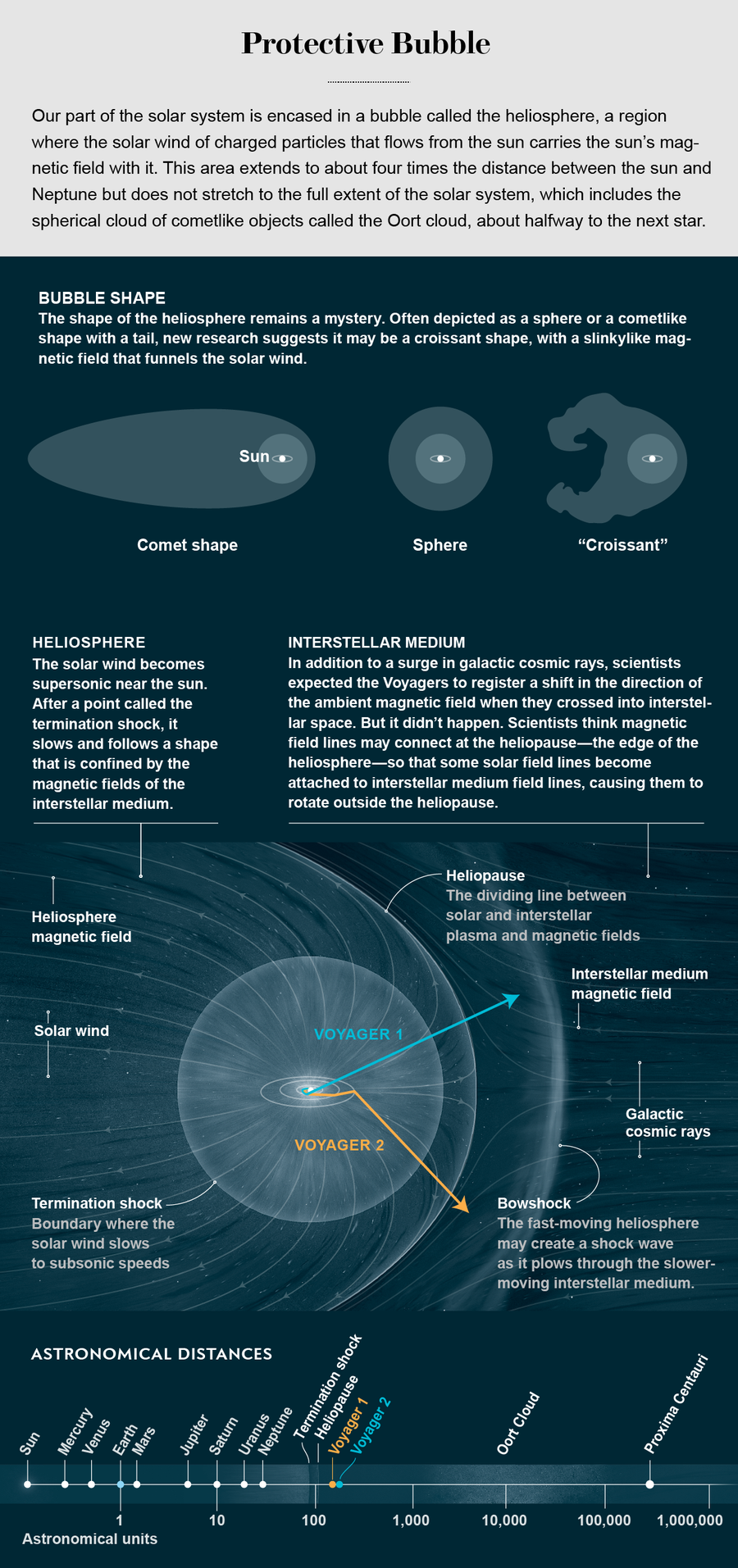
Gurnett's 1993 estimates were prescient. Almost 20 years passed before one of the Voyagers finally made it to the heliopause. During that time the mission narrowly survived threats to its funding, and the Voyager team shrank from hundreds of scientists and engineers to a few dozen close-knit lifers. Most of them remain on the job today. “When you have such a long-lived mission, you start to regard people like family,” Spilker says. “We had our kids around the same time. We'd take vacations together. We're spanning multiple generations now, and some of the younger people on Voyager were not even born [when the spacecraft] launched.”
The tenacity and commitment of that band of brothers and sisters were rewarded on August 25, 2012, when Voyager 1 finally crossed the heliopause. But some of the data it returned were baffling. “We delayed announcing that we had reached interstellar space because we couldn't come to an agreement on the fact,” Cummings says. “There was lots of debate for about a year.”
Although Voyager 1 had indeed found the expected jump in plasma density—its plasma-wave detector, an instrument designed by Gurnett, inferred an 80-fold increase—there was no sign of a change in the direction of the ambient magnetic field. If the vehicle had crossed from an area permeated by the sun's magnetic field to a region where the magnetic field derived from other stars, shouldn't that switch have been noticeable? “That was a shocker,” Cummings says. “And that still bothers me. But a lot of people are coming to grips with it.”
When Voyager 2 reached the interstellar shoreline in November 2018, it, too, failed to detect a magnetic field shift. And the spacecraft added yet another puzzle: it encountered the heliopause at 120 AU from Earth—the same distance marked by its twin six years earlier. That did not jibe with any theoretical models, all of which said the heliosphere should expand and contract in sync with the sun's 11-year cycle. During that period the solar wind ebbs and surges. Voyager 2 arrived when the solar wind was peaking, which, if the models were correct, should have pushed the heliopause farther out than 120 AU. “It was unexpected by all the theorists,” Krimigis says. “I think the modeling, in terms of the findings of the Voyagers, has been found wanting.”
Now that the Voyagers are giving theorists some real field data, their models of the interaction between the heliosphere and the interstellar environment are becoming more complex. “The sort of general picture is that [our sun] emerged from a hot, ionized region” and entered a spotty, partly ionized area in the galaxy, says Gary Zank, an astrophysicist at the University of Alabama in Huntsville. The hot region likely formed in the aftermath of a supernova—some nearby ancient star, or perhaps a few, exploded at the end of its life and heated up the space, stripping electrons off their atoms in the process. The boundary around that region can be thought of as “kind of like the seashore, with all the water and the waves swirling and mixed up. We're in that kind of turbulent region ... magnetic fields get twisted up, turned around. It's not like the smooth magnetic fields that theorists usually like to draw,” although the amount of turbulence seen can differ depending on the type of observation. The Voyagers' data show little field variation at large scales but many small-scale fluctuations around the heliopause, caused by the heliosphere's influence on the interstellar medium. At some point, it is thought, the spacecraft will leave those roiling shoals behind and at last encounter the unalloyed interstellar magnetic field.
Or maybe that picture is completely wrong. A few researchers believe that the Voyagers have not yet left the heliosphere. “There is no reason for the magnetic fields in the heliosphere and the interstellar medium to have exactly the same orientation,” says Len A. Fisk, a space plasma scientist at the University of Michigan and a former NASA administrator. For the past several years Fisk and George Gloeckler, a colleague at Michigan and a longtime Voyager mission scientist, have been working on a model of the heliosphere that pushes its edge out by another 40 AU.
Most people working in the field, however, have been convinced by the dramatic uptick in galactic cosmic rays and plasma density the Voyagers measured. “Given that,” Cummings says, “it's very difficult to argue that we're not really in interstellar space. But then again, it's not like everything fits. That's why we need an interstellar probe.”
McNutt has been pushing for such a mission for decades. He and his colleagues at Johns Hopkins recently completed a nearly 500-page report outlining plans for an interstellar probe that would launch in 2036 and potentially could reach the heliosphere within 15 years, shaving 20 years off Voyager 1's flight time. And unlike the Voyager missions, the interstellar probe would be designed specifically to study the outer edge of the heliosphere and its environs. Within the next two years the National Academies of Sciences, Engineering, and Medicine will decide whether the mission should be one of NASA's priorities for the next decade.
An interstellar probe could answer one of the most fundamental questions about the heliosphere. “If I'm looking from the outside, what the devil does this structure look like?” McNutt asks. “We really don't know. It's like trying to understand what a goldfish bowl looks like from the point of view of the goldfish. We [need to] be able to see the bowl from the outside.” In some models, as the heliosphere cruises along at 450,000 mph, interstellar matter flows smoothly past it, like water around the bow of a ship, resulting in an overall cometlike shape. One recent computer model, developed by astronomer Merav Opher and her colleagues at Boston University, predicts that more turbulent dynamics give the heliosphere a shape like a cosmic croissant.
“You can start multiple fights at any good science conference about that,” McNutt says, “but it's going to take getting out there and actually making some measurements to be able to see what's going on. It would be nice to know what the neighborhood looks like.”
Some things outlive their purpose—answering machines, VCRs, pennies. Not the Voyagers—they transcended theirs, using 50-year-old technology. “The amount of software on these instruments is slim to none,” Krimigis says. “There are no microprocessors—they didn't exist!” The Voyagers' designers could not rely on thousands of lines of code to help operate the spacecraft. “On the whole,” Krimigis says, “I think the mission lasted so long because almost everything was hardwired. Today's engineers don't know how to do this. I don't know if it's even possible to build such a simple spacecraft [now]. Voyager is the last of its kind.”
It won't be easy to say goodbye to these trailblazing vehicles. “It's hard to see it come to an end,” Cummings says. “But we did achieve something really amazing. It could have been that we never got to the heliopause, but we did.”
Voyager 2 now has five remaining functioning instruments, and Voyager 1 has four. All are powered by a device that converts heat from the radioactive decay of plutonium into electricity. But with the power output decreasing by about four watts a year, NASA has been forced into triage mode. Two years ago the mission's engineers turned off the heater for the cosmic-ray detector, which had been crucial in determining the heliopause transit. Everyone expected the instrument to die.
“The temperature dropped like 60 or 70 degrees C, well outside any tested operating limits,” Spilker says, “and the instrument kept working. It was incredible.”
The last two Voyager instruments to turn off will probably be a magnetometer and the plasma science instrument. They are contained in the body of the spacecraft, where they are warmed by heat emitted from computers. The other instruments are suspended on a 43-foot-long fiberglass boom. “And so when you turn the heaters off,” Dodd says, “those instruments get very, very cold.”
How much longer might the Voyagers last? “If everything goes really well, maybe we can get the missions extended into the 2030s,” Spilker says. “It just depends on the power. That's the limiting point.”
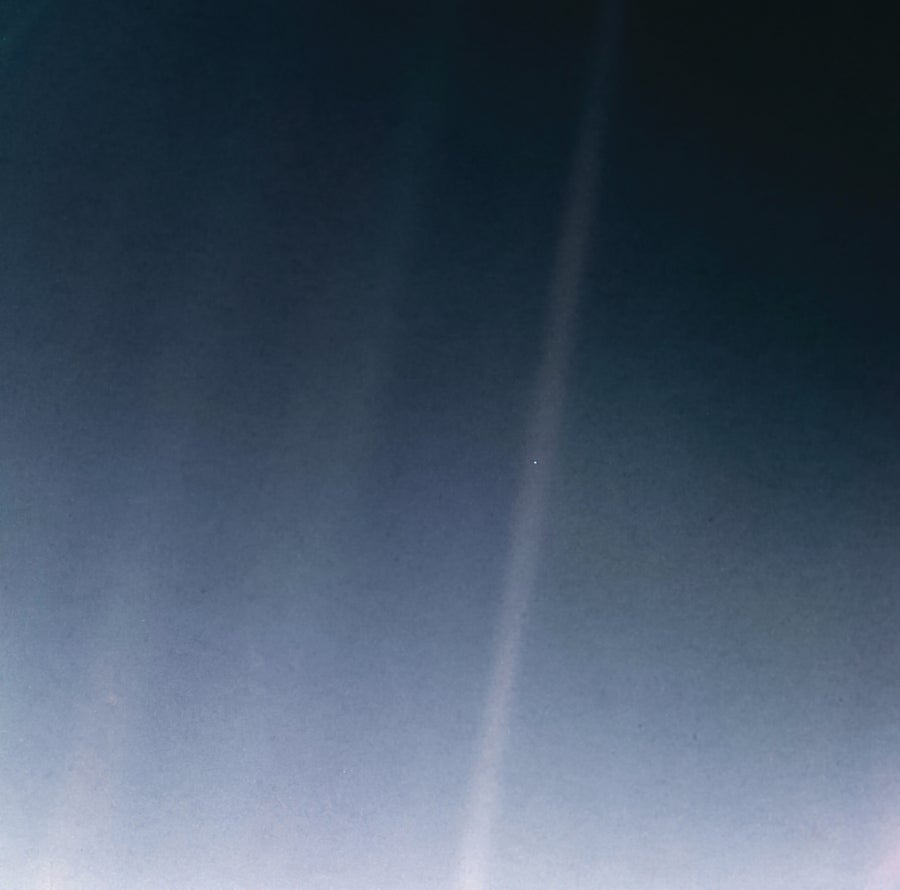
TINY SPECK: Among Voyager 1’s last photographs was this shot of Earth seen from 3.8 billion miles away, dubbed the “Pale Blue Dot” by Voyager scientist Carl Sagan. Credit: NASA/JPL-Caltech
Even after the Voyagers are completely muted, their journeys will continue. In another 16,700 years, Voyager 1 will pass our nearest neighboring star, Proxima Centauri, followed 3,600 years later by Voyager 2. Then they will continue to circle the galaxy for millions of years. They will still be out there, more or less intact, eons after our sun has collapsed and the heliosphere is no more, not to mention one Pale Blue Dot. At some point in their travels, they may manage to convey a final message. It won't be transmitted by radio, and if it's received, the recipients won't be human.
The message is carried on another kind of vintage technology: two records. Not your standard plastic version, though. These are made of copper, coated with gold and sealed in an aluminum cover. Encoded in the grooves of the Golden Records , as they are called, are images and sounds meant to give some sense of the world the Voyagers came from. There are pictures of children, dolphins, dancers and sunsets; the sounds of crickets, falling rain and a mother kissing her child; and 90 minutes of music, including Bach's Brandenburg Concerto No. 2 and Chuck Berry's “Johnny B. Goode.”
And there is a message from Jimmy Carter, who was the U.S. president when the Voyagers were launched. “We cast this message into the cosmos,” it reads in part. “We hope someday, having solved the problems we face, to join a community of galactic civilizations. This record represents our hope and our determination, and our good will in a vast and awesome universe.”
*Editor’ Note (6/22/22): This paragraph was edited after posting to correct the description of when NASA began shutting down nonessential components of the Voyager spacecraft.
Tim Folger is a freelance journalist who writes for National Geographic , Discover , and other national publications.
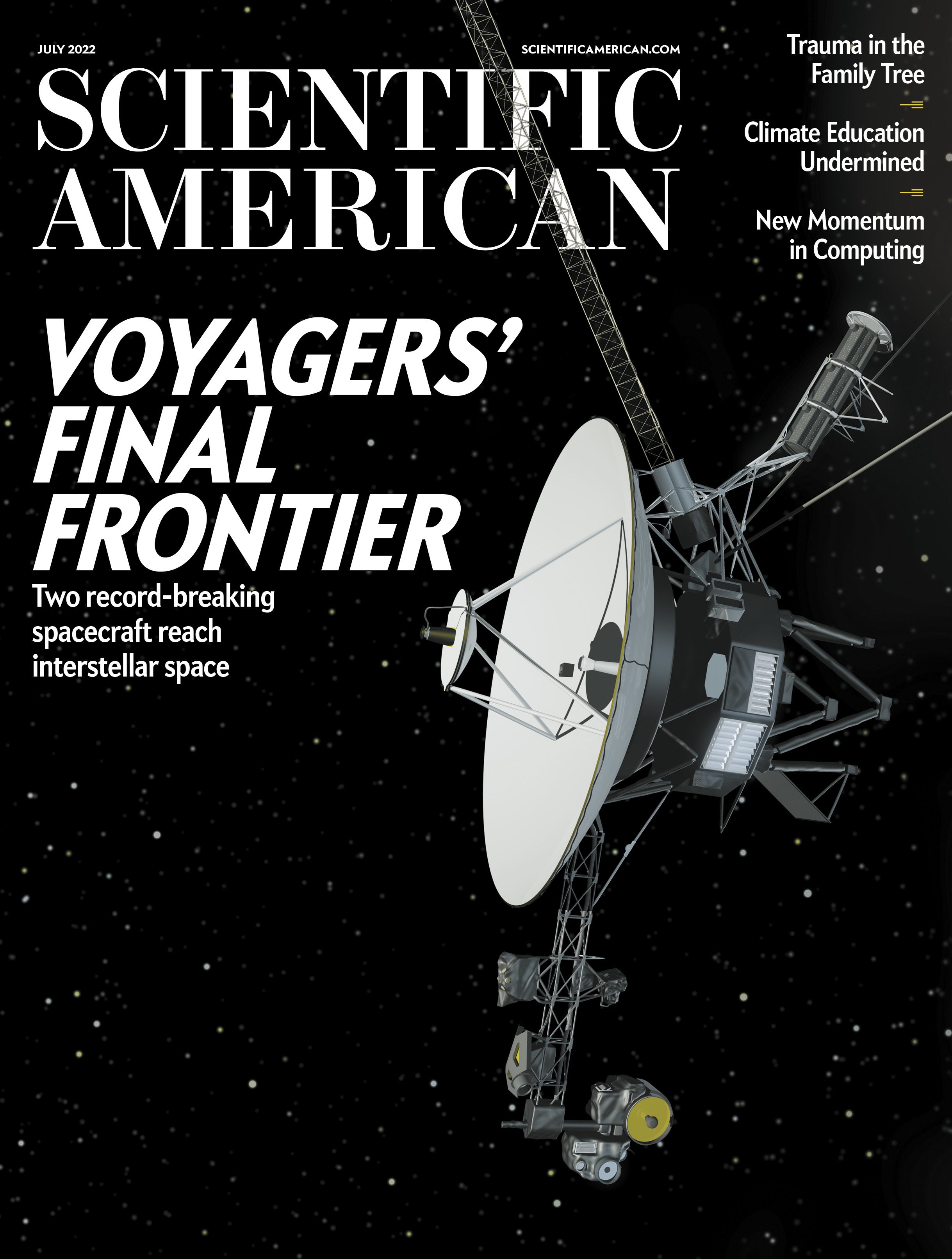
NASA has solved the mystery of Voyager 1's strange data transmissions

As NASA wrestles with Artemis 1's engine woes that are delaying the return to human exploration of the moon, the agency has solved another mystery, one causing its 45-year-old spacecraft, Voyager 1, to transmit garbled data.
NASA engineers have found the bug that was causing critical instruments on the four-decade-old spacecraft to send "garbled" health information to mission controllers on Earth.
- Apple Vision Pro review: Fascinating, flawed, and needs to fix 5 things
- Apple builds a slimmed-down AI model using Stanford, Google innovations
- I tested the AI gadget that got the internet buzzing and it left me wanting more
- 9 biggest announcements at Google I/O 2024: Gemini, Search, Project Astra, and more
Voyager 1's attitude articulation and control system (AACS), which keeps its antenna directed at Earth, earlier this year started to send back information that didn't reflect what was actually happening onboard . The AACS appeared to be functioning normally, but the data it was sending back was deemed invalid because it didn't match any possible state the system could be in.
SEE: What is Artemis? Everything you need to know about NASA's new moon mission
Also, the rest of the probe appeared healthy, since it continued to gather and return science data.
The agency today said it has found the source of the garbled information: a zombie computer that should not have been used to relay telemetry data.
"The AACS had started sending the telemetry data through an onboard computer known to have stopped working years ago, and the computer corrupted the information," NASA said in a press release .
While NASA engineers have solved the problem, they still don't know why the AACS started routing information through the non-functioning computer. However, they guess that the AACS probably received a faulty command from another onboard computer.
NASA notes that if that other onboard computer generated a bad command, there could be an issue somewhere else on the spacecraft. The search continues for what the underlying issue is, but engineers believe it won't drastically harm its future.
SEE: NASA's new tiny, high-powered laser could find water on the Moon
"We're happy to have the telemetry back," said Suzanne Dodd, Voyager's project manager.
"We'll do a full memory readout of the AACS and look at everything it's been doing. That will help us try to diagnose the problem that caused the telemetry issue in the first place. So we're cautiously optimistic, but we still have more investigating to do."
Voyager 1 launched from Cape Canaveral in September 1977 and is now the farthest spacecraft from Earth, traveling in space at about 14.5 billion miles (23.3 billion kilometers) away. It would take light about 20 hours to travel from the spacecraft.
The Voyager 1 was the first human-made object to reach into interstellar space and in 1998 overtook NASA's Pioneer 10 to become the most distant human-made object.
It reached interstellar space in August 2012 and, among other things, takes measurements of the density of material in interstellar space . It will eventually exit the solar system but not for a long, long time.
I tested a robot vacuum with a handheld vacuum that empties itself
The best m.2 ssds you can buy: expert tested, the best robot vacuum memorial day deals: save on irobot, roborock, and more.
Universe Watcher
Discover what exist in the universe
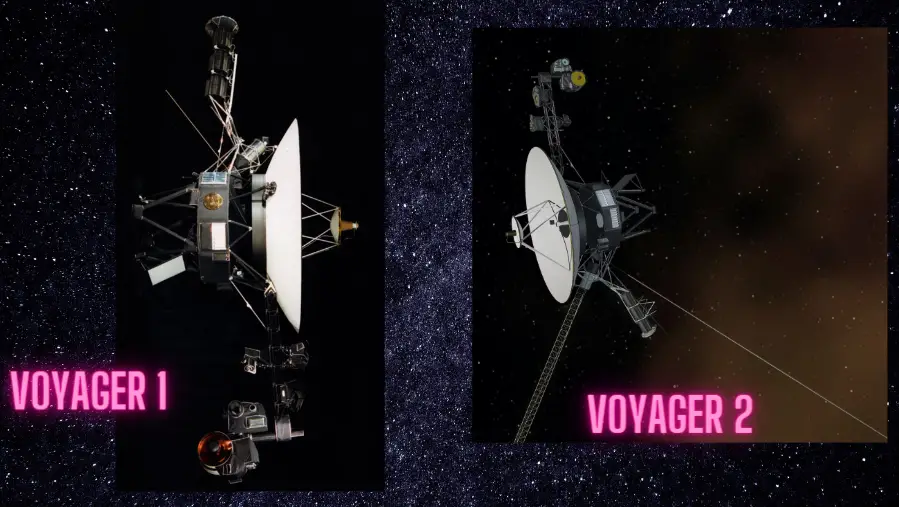
45 Years Later, Voyager’s New Discovery Is Terrifying
In 1977, NASA sent two spacecraft into space on an exploration mission unlike any other. The Voyager 1 and 2 were sent to explore the outer boundaries of our solar system and beyond. And it’s just been announced that after nearly 8 years in space, Voyager has made a horrifying discovery! Click through to learn more about this terrifying new discovery from the final frontier and what it means for all of us here at home.
The Time Machine – Carl Sagan
The spacecraft will be on the other side of the Sun from us, in interstellar space. Even at that distance, it will take radio signals—which move at the speed of light—17 hours to reach Earth. If a signal is sent from Earth on January 1st 2000 and you start counting 17 hours afterwards, the spacecraft receives it on January 18th. In order for those 17 hours to pass for us here on Earth, we must wait until July 18th.
What Scientists Found On Voyager
The probe is now a little over 11 billion miles from Earth. The spacecraft has been sending information home for 45 years. On Friday morning, NASA announced that the probe had reached interstellar space. Scientists found that it exited our solar system on September 12th of last year. The probe is now in the Heliosheath — the outermost layer of our sun’s atmosphere. But scientists have discovered something terrifying about this part of space: it’s filled with particles and radiation from other stars and galaxies .
The Journey So Far
Since its launch in 1977, the Voyager 2 space probe has been one of NASA’s most successful missions. It has traveled over 13 billion miles and visited Jupiter and Saturn before crossing into interstellar space. Now, after 45 years in space, it has made a new discovery that could change the world forever. We have not heard from them since 2013 when they were 1.7 billion miles away from Earth. Now, for some reason unknown to us, we are hearing from them again with no explanation as to why or what happened to make this happen.
The Two Spacecrafts – Voyagers 1 and 2
Voyager 1 and 2 were launched in 1977 by NASA. The two spacecrafts traveled on a mission to the outer solar system. Voyager 1 was launched on Sept. 5th and Voyager 2 was launched four days later on Sept. 9th. In 2012, both spacecrafts passed out of our solar system and into interstellar space where they are still exploring for planets or other objects orbiting other stars outside of our own solar system. In late December 2018, NASA finally announced that after 45 years of exploration in deep space, Voyager 1 reached interstellar space.
Voyager 2 has been traveling behind Voyager 1 since they left Earth, but it will catch up with its twin soon enough.
The twin Voyagers will explore different areas within interstellar space before moving back towards our solar system.
Their Missions
Voyager is a NASA space probe launched in 1977. It was the first to provide detailed images and scientific information about the four large planets of the outer solar system.
In September 2013, scientists discovered a new region of space where stars are born. The Hourglass nebula spans three light-years and is located 15,000 light-years from Earth in the constellation Carina. It is estimated that it takes about 250 million years for material from this nebula to reach our solar system. Scientists were able to create an image of the nebula by combining data taken by two separate telescopes: Herschel and Hubble.
How Long Will They Last?
The distance between Earth and Voyager 1 is about 18.4 billion kilometers. With one light year equaling 9.5 trillion kilometers, it will take another 164 years for the spacecraft to reach the edge of our solar system. Once it gets there, it will start to explore interstellar space and eventually float out into the void of deep space where human hands may never touch it again.
We Could Have Lost Them Long Ago.
Voyager has been mapping space for the last 45 years and just announced that they have found a new object in the Kuiper Belt. The good news is that it is not on a collision course with Earth.
What’s the bad news? The object is estimated to be 4 times larger than Pluto and its orbit takes it out of our solar system periodically so we could have lost them long ago.
Where are They Now?
In 1977, NASA launched two probes into the depths of space: Voyager 1 and 2. These probes were equipped with a variety of instruments that allowed them to explore Jupiter and Saturn. After 45 years of exploration (and what seems like an eternity), Voyager 1 has detected an anomaly in space. Scientists from the University of Maryland have found that the probe is detecting interstellar matter which is matter that originated outside our solar system. The presence of this interstellar matter suggests that it will likely collide with one or both probes.
Will Voyager 1 die?
NASA’s 1977-launched Voyager 1 is still going strong and continuously sending data back from the furthest regions of our solar system. It is difficult to forecast a spacecraft’s future, though, particularly if it has outlived its anticipated lifespan by several decades. The spacecraft’s plutonium-238 radioisotope thermoelectric generators (RTGs) are its only source of power, and they gradually lose their capacity. Certain Voyager 1 systems and instruments may stop working as these power levels drop. The spaceship itself might not “die” in the traditional sense, but its capacity to interact with other people and carry out research will eventually deteriorate. Still, Voyager 1’s amazing voyage has already given us priceless new perspectives on our solar system, and its continuous mission will further our knowledge of interstellar space. It continues to be a monument to human curiosity and inventiveness.
Will Voyager 1 leave the Milky Way?
There is no plan for Voyager 1 to depart the Milky Way galaxy. The spacecraft’s main goal upon launch by NASA in 1977 was to investigate the outer planets of our solar system. Following the accomplishment of its primary mission goals, Voyager 1 proceeded into interstellar space, where it was no longer subject to the gravitational attraction of our Sun. It is moving through the Milky Way, but not at the speed needed to break out from the gravitational pull of our galaxy. Because of the great distances involved and the limits of its propulsion technology, Voyager 1 is essentially unable to leave the Milky Way. However, as it moves away from Earth, the spacecraft is giving important information about the outer regions of our solar system and the properties of interstellar space.
Why hasn’t Voyager 1 crashed?
The main reason Voyager 1 has not crashed is that its careful planning and execution allowed it to pass through our solar system without coming into contact with any celestial bodies. NASA launched Voyager 1 in 1977 with the goal of investigating planets beyond our solar system, including Jupiter and Saturn. Its trajectory was meticulously predicted after these interactions to prevent collisions with any celestial entities. Following the conclusion of its primary mission, Voyager 1 proceeded towards interstellar space. Voyager 1’s course was designed to ensure it would safely travel beyond the farthest regions of our solar system and into interstellar space, in contrast to missions that entail landing on or orbiting celestial planets. Voyager 1’s navigational accuracy and the lack of obstructions on its well-planned course contributed to the project’s success by enabling it to continue its exploration mission without running the risk of colliding with any celestial bodies.
Can we get Voyager 1 back?
It is not possible to recover Voyager 1 and return it to Earth because of the great distances required and the limitations of available space exploration capabilities. NASA launched Voyager 1 in 1977, and it has already reached interstellar space, a vast distance beyond the boundaries of our solar system. The spacecraft is traveling away from Earth at an incredible rate of speed. Through the Deep Space Network, scientists are able to stay in contact with Voyager 1 and obtain important data from its equipment. However, considering its current location and the technological limitations of our space exploration capabilities, retrieving the actual spacecraft would take an unfeasible amount of time, energy, and resources. Although Voyager 1 cannot be physically returned to Earth, it still serves as a monument to human ingenuity and discovery, offering insightful information about the far reaches of our cosmic neighborhood.
Is Voyager 1 or 2 farther?
In actuality, Voyager 2 is farther away from Earth than Voyager 1. Voyager 2 was launched in 1977 ahead of Voyager 1, but it took a different path that allowed it to visit Neptune, Jupiter, Saturn, and Uranus on its extensive journey around the outer planets. Voyager 2’s trajectory resulted in a greater detour, and as a result, it is currently positioned differently from Voyager 1 with respect to the Sun. Currently outside the gravitational pull of our Sun, both spacecraft are in interstellar space, however Voyager 2 is farther away from Earth due to its different trajectory.
How old is Voyager 1?
Voyager 1, on September 5, 2023, will be 46 years old. On September 5, 1977, NASA launched it from Florida’s Kennedy Space Center. The main goal of Voyager 1 was to investigate Jupiter and Saturn as well as the outer planets of our solar system. Upon accomplishing its primary goals, the spacecraft proceeded into interstellar space, marking the first instance of a human-made object doing so. Voyager 1 has contributed significantly to our knowledge of the outermost regions of the solar system and beyond over the years by continuing to send crucial data on the conditions in interstellar space. Even after all these years, Voyager 1 is still a magnificent example of how robust and long-lasting well-designed space probes can be.
Voyager 1 glitch? Strange signals from venerable probe has NASA baffled
It's never too late for a Voyager 1 mystery in deep space.
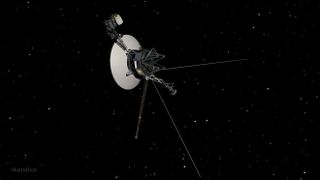
Spending 45 years traversing the solar system really does a number on a spacecraft.
NASA's Voyager 1 mission launched in 1977, passed into what scientists call interstellar space in 2012 and just kept going — the spacecraft is now 14.5 billion miles (23.3 billion kilometers) away from Earth . And while Voyager 1 is still operating properly, scientists on the mission recently noticed that it appeared confused about its location in space without going into safe mode or otherwise sounding an alarm.
"A mystery like this is sort of par for the course at this stage of the Voyager mission," Suzanne Dodd, project manager for Voyager 1 and its twin, Voyager 2, at NASA's Jet Propulsion Laboratory in California, said in a statement .
Related : Pale Blue Dot at 30: Voyager 1's iconic photo of Earth from space reveals our place in the universe
"The spacecraft are both almost 45 years old, which is far beyond what the mission planners anticipated," Dodd added. "We're also in interstellar space — a high-radiation environment that no spacecraft have flown in before."
The glitch has to do with Voyager 1's attitude articulation and control system, or AACS, which keeps the spacecraft and its antenna in the proper orientation. And the AACS seems to be working just fine, since the spacecraft is receiving commands, acting on them and sending science data back to Earth with the same signal strength as usual. Nevertheless, the AACS is sending the spacecraft's handlers junk telemetry data.
The NASA statement does not specify when the issue began or how long it has lasted.
Get the Space.com Newsletter
Breaking space news, the latest updates on rocket launches, skywatching events and more!
The agency says that Voyager personnel will continue to investigate the issue and attempt to either fix or adapt to it. That's a slow process, since a signal from Earth currently takes 20 hours and 33 minutes to reach Voyager 1; receiving the spacecraft's response carries the same delay.
— What Voyager 1 learned at Jupiter 40 years ago — Voyager at 40: 40 photos from NASA's epic 'grand tour' mission — Voyager 1's historic flyby of Jupiter in photos
The twin Voyager 2 probe, also launched in 1977, is behaving normally, NASA said. The power the twin spacecraft can produce is always falling, and mission team members have turned some components off to save juice — measures they hope will keep the probes working through at least 2025.
"There are some big challenges for the engineering team," Dodd said. "But I think if there's a way to solve this issue with the AACS, our team will find it."
Email Meghan Bartels at [email protected] or follow her on Twitter @ meghanbartels . Follow us on Twitter @ Spacedotcom and on Facebook .
Join our Space Forums to keep talking space on the latest missions, night sky and more! And if you have a news tip, correction or comment, let us know at: [email protected].
Meghan is a senior writer at Space.com and has more than five years' experience as a science journalist based in New York City. She joined Space.com in July 2018, with previous writing published in outlets including Newsweek and Audubon. Meghan earned an MA in science journalism from New York University and a BA in classics from Georgetown University, and in her free time she enjoys reading and visiting museums. Follow her on Twitter at @meghanbartels.
Science and music festival Starmus VII is about to rock Bratislava with a stellar lineup
China's Chang'e 6 mission to collect samples of the far side of the moon enters lunar orbit (video)
'It has an 'Aliens'-like vibe:' 'Atlas' director Brad Peyton on channeling James Cameron (exclusive)
Most Popular
- 2 Starmus 2024: Scientists and musicians unite in Bratislava to celebrate planet Earth
- 3 The future is bright for astronomy, and very expensive (op-ed)
- 4 NASA's 'Mohawk Guy' cameo in '3 Body Problem' explained (exclusive)
- 5 Black hole singularities defy physics. New research could finally do away with them.
- Mobile News
- Mobile Reviews
- Mobile Finder
- Mobile Comparison
- Mobile Recommender
- Laptops/PC News
- Laptops/PC Reviews
- Laptop Finder
- Laptop Comparison
- Laptop Recommender
- Gaming News
- Gaming Reviews
- Tablet Finder
- Wearables News
- Wearables Reviews
- Smart Watches
- Fitness Bands
- Tablet Comparison
- Web Stories
- Samsung Event
- Apple Event
- Home Appliances
- Brand Stories
- Tablet Recommender
- Terms of Use
- Privacy Policy
- HT Tech Authors
Copyright © HT Media Limited All rights reserved.
NASA Voyager 1 space probe sends data to Earth that shocks scientists!
Nasa's voyager 1 space probe, which is billions of miles from earth, has sent back some baffling data back to the planet..
NASA Voyager 1 space probe was launched 45 years ago and continues its journey far beyond our Solar System to study the outer heliosphere and the interstellar medium. So, how far is Voyager 1 from Earth? It is has gone 14.5 billion miles (23.3 billion km) away, reports Space.com. It is an iconic probe and has sent hugely important data back to NASA since launch. But now, the new strange data sent by the Voyager from the edge of the Solar System has left scientists shocked as till date there has been no significant errors reported by the probe! Since the Voyager 1 data is of critical importance, the engineering team is trying to solve the mysterious data sent by the space probe.
“The interstellar explorer is operating normally, receiving and executing commands from Earth, along with gathering and returning science data. But readouts from the probe's attitude articulation and control system (AACS) don't reflect what's actually happening onboard.” NASA said in a statement. But what does this data received back on earth actually mean? Also Read: Closest-ever Sun Photo captured; Solar orbiter sees sola flares, 'hedgehog', more
You may be interested in
NASA says an antenna attached to Voyager, which is pointed at Earth to send data back, appears to be working but is sending back invalid data. The AACS controls the 45-year-old spacecraft's orientation. Among other tasks, it keeps Voyager 1's high-gain antenna pointed precisely at Earth, enabling it to send data home. All signs suggest the AACS is still working, but the telemetry data it's returning is invalid. For instance, the data may appear to be randomly generated, or does not reflect any possible state the AACS could be in. Also Read: Tragedy averted! NASA cancels spacewalks after water fills up astronaut's helmet
Thankfully, the issue with the NASA Voyager 1 hasn't triggered any onboard fault protection systems. This system is designed to keep the spacecraft in the “safe mode” which maintains a state where only essential operations are carried out, while giving engineers time to analyse and diagnose the issue. Not just that, even the signals of Voyager 1 haven't weakened, which suggests the high-gain antenna remains in its prescribed orientation to Earth.
Catch all the Latest Tech News , Mobile News , Laptop News , Gaming news , Wearables News , How To News , also keep up with us on Whatsapp channel , Twitter , Facebook , Google News , and Instagram . For our latest videos, subscribe to our YouTube channel .
More From This Section
71653125256151
Tips & Tricks

sendGA4Events(this), 0)" data-item-widget-name="Tips & Tricks" data-item-story-type="story" data-item-story-title="How to book train tickets anywhere with UTS app: Simplified, paperless, sustainable travel" data-item-target-url="tech.hindustantimes.com/web-stories/how-to-book-train-tickets-anywhere-with-uts-app-simplified-paperless-sustainable-travel-71716108690268.html" data-item-product-position="1" data-item-story-segment="NA" data-item-event="story_click" data-item-page-name="story page" data-item-widget-element="title"> How to book train tickets anywhere with UTS app: Simplified, paperless, sustainable travel

sendGA4Events(this), 0)" data-item-widget-name="Tips & Tricks" data-item-story-type="story" data-item-story-title="Microsoft OneNote: Know how to use this app to make office meetings easy" data-item-target-url="tech.hindustantimes.com/how-to/microsoft-onenote-know-how-to-use-this-app-to-make-office-meetings-easy-71713945553075.html" data-item-product-position="2" data-item-story-segment="NA" data-item-event="story_click" data-item-page-name="story page" data-item-widget-element="title"> Microsoft OneNote: Know how to use this app to make office meetings easy

sendGA4Events(this), 0)" data-item-widget-name="Tips & Tricks" data-item-story-type="story" data-item-story-title="10 things to remember if you are renting AC instead of buying this summer" data-item-target-url="tech.hindustantimes.com/web-stories/10-things-to-remember-if-you-are-renting-ac-instead-of-buying-this-summer-71716365774540.html" data-item-product-position="3" data-item-story-segment="NA" data-item-event="story_click" data-item-page-name="story page" data-item-widget-element="title"> 10 things to remember if you are renting AC instead of buying this summer

sendGA4Events(this), 0)" data-item-widget-name="Tips & Tricks" data-item-story-type="story" data-item-story-title="Tips to get free data vouchers from Jio, data loans from Airtel for urgent needs" data-item-target-url="tech.hindustantimes.com/web-stories/tips-to-get-free-data-vouchers-from-jio-data-loans-from-airtel-for-urgent-needs-71716012286793.html" data-item-product-position="4" data-item-story-segment="NA" data-item-event="story_click" data-item-page-name="story page" data-item-widget-element="title"> Tips to get free data vouchers from Jio, data loans from Airtel for urgent needs
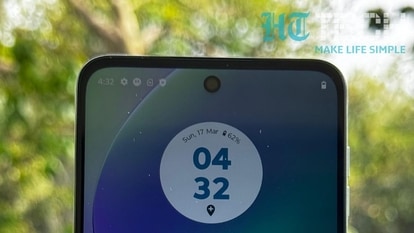
sendGA4Events(this), 0)" data-item-widget-name="Tips & Tricks" data-item-story-type="story" data-item-story-title="Moto G64 5G review: 10 things to know about this budget-friendly smartphone" data-item-target-url="tech.hindustantimes.com/web-stories/moto-g64-5g-review-10-things-to-know-about-this-budget-friendly-smartphone-71716181953163.html" data-item-product-position="5" data-item-story-segment="NA" data-item-event="story_click" data-item-page-name="story page" data-item-widget-element="title"> Moto G64 5G review: 10 things to know about this budget-friendly smartphone
Editor’s pick.

sendGA4Events(this), 0)" data-item-widget-name="editors pick" data-item-story-type="story" data-item-story-title="iPhone 16 vs iPhone 17: Why you may want to wait for Apple’s next big surprise in 2025" data-item-target-url="tech.hindustantimes.com/mobile/news/iphone-16-vs-iphone-17-why-you-may-want-to-wait-for-apple-s-next-big-surprise-in-2025-71715323712676.html" data-item-product-position="1" data-item-story-segment="news" data-item-event="story_click" data-item-page-name="story page" data-item-widget-element="title" > iPhone 16 vs iPhone 17: Why you may want to wait for Apple’s next big surprise in 2025

sendGA4Events(this), 0)" data-item-widget-name="editors pick" data-item-story-type="story" data-item-story-title="Moto G64 5G Review: Big battery budget smartphone at ₹ 17,990" data-item-target-url="tech.hindustantimes.com/mobile/reviews/moto-g64-5g-review-big-battery-budget-smartphone-at-rs-17990-71716097969279.html" data-item-product-position="2" data-item-story-segment="reviews" data-item-event="story_click" data-item-page-name="story page" data-item-widget-element="title" > Moto G64 5G Review: Big battery budget smartphone at ₹ 17,990

sendGA4Events(this), 0)" data-item-widget-name="editors pick" data-item-story-type="story" data-item-story-title="Samsung Galaxy Z Fold 6 launch: Design, processor, cameras and more- Here’s what to expect" data-item-target-url="tech.hindustantimes.com/mobile/news/samsung-galaxy-z-fold-6-launch-design-processor-cameras-and-more-here-s-what-to-expect-71716447021793.html" data-item-product-position="3" data-item-story-segment="news" data-item-event="story_click" data-item-page-name="story page" data-item-widget-element="title" > Samsung Galaxy Z Fold 6 launch: Design, processor, cameras and more- Here’s what to expect

sendGA4Events(this), 0)" data-item-widget-name="editors pick" data-item-story-type="story" data-item-story-title="OnePlus Nord 4 launch in India : From Snapdragon chipset to Android 14, know what's coming" data-item-target-url="tech.hindustantimes.com/mobile/news/oneplus-nord-4-launch-in-india-from-snapdragon-chipset-to-android-14-know-whats-coming-71714505620496.html" data-item-product-position="4" data-item-story-segment="news" data-item-event="story_click" data-item-page-name="story page" data-item-widget-element="title" > OnePlus Nord 4 launch in India : From Snapdragon chipset to Android 14, know what's coming
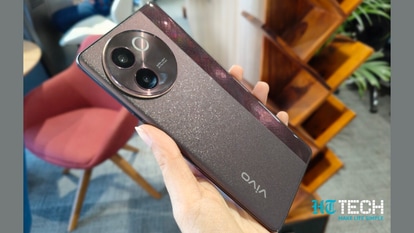
sendGA4Events(this), 0)" data-item-widget-name="editors pick" data-item-story-type="story" data-item-story-title="Vivo V30e 5G Review: Premium smartphone at ₹ 27,999 with ever-lasting battery life" data-item-target-url="tech.hindustantimes.com/mobile/reviews/vivo-v30e-5g-review-premium-smartphone-at-rs-27-999-with-ever-lasting-battery-life-71714645655347.html" data-item-product-position="5" data-item-story-segment="reviews" data-item-event="story_click" data-item-page-name="story page" data-item-widget-element="title" > Vivo V30e 5G Review: Premium smartphone at ₹ 27,999 with ever-lasting battery life
Trending stories.

sendGA4Events(this), 0)" data-item-widget-name="trending stories" data-item-story-type="story" data-item-story-title="iPhone 14 Plus price drops by 19% on Amazon- Check exchange and bank offers" data-item-target-url="tech.hindustantimes.com/web-stories/iphone-14-plus-price-drops-by-19-on-amazon-check-exchange-and-bank-offers-71716446926578.html" data-item-product-position="1" data-item-story-segment="NA" data-item-event="story_click" data-item-page-name="story page" data-item-widget-element="title"> iPhone 14 Plus price drops by 19% on Amazon- Check exchange and bank offers

sendGA4Events(this), 0)" data-item-widget-name="trending stories" data-item-story-type="story" data-item-story-title="Realme GT 6T launched: 8 things to know about this ‘performance smartphone priced’ at ₹ 30,999" data-item-target-url="tech.hindustantimes.com/web-stories/realme-gt-6t-launched-8-things-to-know-about-this-performance-smartphone-priced-at-rs-30999-71716371405358.html" data-item-product-position="2" data-item-story-segment="NA" data-item-event="story_click" data-item-page-name="story page" data-item-widget-element="title"> Realme GT 6T launched: 8 things to know about this ‘performance smartphone priced’ at ₹ 30,999
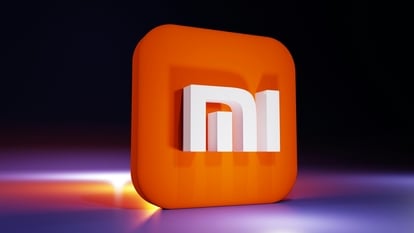
sendGA4Events(this), 0)" data-item-widget-name="trending stories" data-item-story-type="story" data-item-story-title="Xiaomi copies Apple's controversial 'crush ad' with some 'Mi twist'" data-item-target-url="tech.hindustantimes.com/tech/news/xiaomi-copies-apples-controversial-crush-ad-with-some-mi-twist-71716417096615.html" data-item-product-position="3" data-item-story-segment="news" data-item-event="story_click" data-item-page-name="story page" data-item-widget-element="title"> Xiaomi copies Apple's controversial 'crush ad' with some 'Mi twist'

sendGA4Events(this), 0)" data-item-widget-name="trending stories" data-item-story-type="story" data-item-story-title="iPhone 17 Ultra: How Apple may change the game in 2025 like it did with iPhone X in 2017" data-item-target-url="tech.hindustantimes.com/mobile/news/iphone-17-ultra-how-apple-may-change-the-game-in-2025-like-it-did-with-iphone-x-in-2017-71716270352870.html" data-item-product-position="4" data-item-story-segment="news" data-item-event="story_click" data-item-page-name="story page" data-item-widget-element="title"> iPhone 17 Ultra: How Apple may change the game in 2025 like it did with iPhone X in 2017

sendGA4Events(this), 0)" data-item-widget-name="trending stories" data-item-story-type="story" data-item-story-title="“Nothing good has ever happened over Twitter,” says MS Dhoni when asked why he prefers Instagram" data-item-target-url="tech.hindustantimes.com/tech/news/nothing-good-has-ever-happened-over-twitter-says-ms-dhoni-when-asked-why-he-prefers-instagram-71716356580656.html" data-item-product-position="5" data-item-story-segment="news" data-item-event="story_click" data-item-page-name="story page" data-item-widget-element="title"> “Nothing good has ever happened over Twitter,” says MS Dhoni when asked why he prefers Instagram
sendGA4Events(this), 0)" data-item-widget-name="gaming" data-item-story-type="story" data-item-story-title="GTA Online: God mode glitches patched by Rockstar Games to correct the playing field" data-item-target-url="tech.hindustantimes.com/gaming/news/gta-online-god-mode-glitches-patched-by-rockstar-games-to-correct-the-playing-field-71716962336983.html" data-item-product-position="1" data-item-story-segment="news" data-item-event="story_click" data-item-page-name="story page" data-item-widget-element="title"> GTA Online: God mode glitches patched by Rockstar Games to correct the playing field


sendGA4Events(this), 0)" data-item-widget-name="gaming" data-item-story-type="story" data-item-story-title="GTA 6 fans anticipate artists and songs for Vice City: Rockstar Games playlist buzz builds excitementUntitled Story" data-item-target-url="tech.hindustantimes.com/gaming/news/gta-6-fans-anticipate-artists-and-songs-for-vice-city-rockstar-games-playlist-buzz-builds-excitementuntitled-story-71716875690367.html" data-item-product-position="2" data-item-story-segment="news" data-item-event="story_click" data-item-page-name="story page" data-item-widget-element="title"> GTA 6 fans anticipate artists and songs for Vice City: Rockstar Games playlist buzz builds excitementUntitled Story

sendGA4Events(this), 0)" data-item-widget-name="gaming" data-item-story-type="story" data-item-story-title="GTA 6 fan made collector's edition concept sparks excitement and speculation across social media" data-item-target-url="tech.hindustantimes.com/gaming/news/gta-6-fan-made-collectors-edition-concept-sparks-excitement-and-speculation-across-social-media-71716792627858.html" data-item-product-position="3" data-item-story-segment="news" data-item-event="story_click" data-item-page-name="story page" data-item-widget-element="title"> GTA 6 fan made collector's edition concept sparks excitement and speculation across social media

sendGA4Events(this), 0)" data-item-widget-name="gaming" data-item-story-type="story" data-item-story-title="GTA 6: Release date, main characters and more unveiled - Here’s everything you need to know about" data-item-target-url="tech.hindustantimes.com/gaming/news/gta-6-release-date-main-characters-and-more-unveiled-here-s-everything-you-need-to-know-about-71716563861192.html" data-item-product-position="4" data-item-story-segment="news" data-item-event="story_click" data-item-page-name="story page" data-item-widget-element="title"> GTA 6: Release date, main characters and more unveiled - Here’s everything you need to know about

sendGA4Events(this), 0)" data-item-widget-name="gaming" data-item-story-type="story" data-item-story-title="Call of Duty: Black Ops 6 announced, first trailer ‘The Truth Lies’ teased by Activision" data-item-target-url="tech.hindustantimes.com/gaming/news/call-of-duty-black-ops-6-announced-first-trailer-the-truth-lies-teased-by-activision-71716549336257.html" data-item-product-position="5" data-item-story-segment="news" data-item-event="story_click" data-item-page-name="story page" data-item-widget-element="title"> Call of Duty: Black Ops 6 announced, first trailer ‘The Truth Lies’ teased by Activision
Best Deals For You
Trending News
Trending gadgets.
- https://tech.hindustantimes.com/tech/news/nasa-voyager-1-space-probe-sends-data-to-earth-that-shocks-scientists-71653125256151.html
- https://tech.hindustantimes.com/tech/news/historic-closest-ever-sun-photo-captured-solar-orbiter-sees-solar-flares-hedgehog-more-71653068797736.html
- https://tech.hindustantimes.com/tech/news/tragedy-averted-nasa-cancels-spacewalks-after-water-fills-up-astronaut-s-helmet-71653055988798.html
- https://tech.hindustantimes.com/tech/news/historic-india-s-first-ever-5g-call-watch-this-national-milestone-71653047997025.html

Unveiling the Wonders: Experience the Magic of Science
Voyager Makes Shocking Discovery After 45 Years in Space
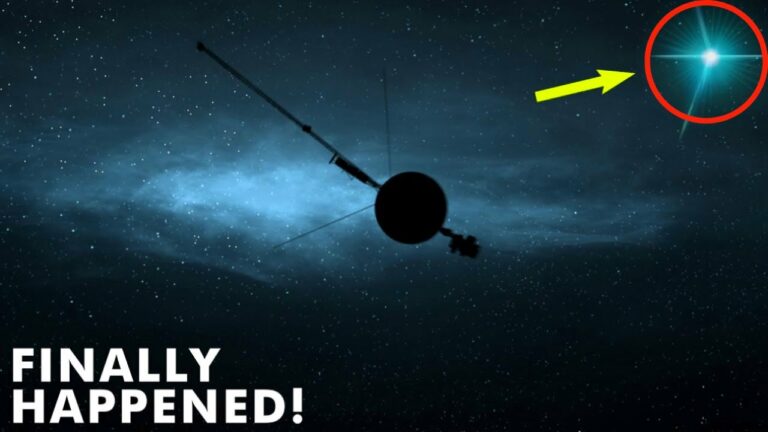
Astronomy & Space
- 1.5K shares
- 292 Facebook
- 292 Twitter
- 292 Pinterest
On Aug. 20, 1977, an extraordinary spacecraft left this planet on a journey like no other. Voyager 2 was going to show us, for the first time, what the outer solar system planets looked like close-up.
Reaching milestones that have paved the way for future exploration, the Voyager Mission has achieved many feats that still remain unbeaten, and what’s more, an extension may be underway.
We’ll be talking about the achievements of the incredibly successful Voyager Program and what comes next as NASA gears up for its most ambitious Interstellar Mission yet.
Do not forget to share your opinion with us to provide you with the best posts !
Like it? Share with your friends!
What's your reaction, cancel reply.
Your email address will not be published. Required fields are marked *
forgot password

- Share full article
Advertisement
Supported by
Soviet Claims Joint Credit for Finding Jupiter's Ring
By Theodore Shabad
- April 18, 1979
The Soviet Union, reacting to thediscovery of a ring around the planet Jupiter by the American spacecraft Voyager 1, has claimed joint credit for the discov ery, contending that a Russian scientist predicted the ring's existence as early as 1960.
Long sensitive to the question of priority in scientific discovery, Moscow ad vanced its claim earlier this month in the Government newspaper Iz vestia, which published an interview with Viktor A. Ambartsumyan, a prominent and respected astronomer.
Dr. Ambartsumyan, director of the Byurakan Observatory in Soviet Armenia, said the existence of a ring around Jupiter and of volcanic activity on its moons was predicted by a Kiev University professor, S.K. Vsekhsvyatsky, and was discussed in a scientific paper published 19 years ago.
The astronomer said that Professor Vsekhsvyatsky reiterated his prediction in 1969 and 1972 and that his papers had been translated into French and German. Dr. Arnbartsulnyan said he thought it unlikely that the team working with Voyager I could have been unfamiliar with those findings.
Ring of Rocky Material
The American spacecraft, in passing by Jupiter in early March, identified both a volcanic eruption on Io, one of Jupiter's 13 moons, and what appeared to be a thin ring of rocky material circling the giant planet. Scientists speculated that the debris might be the remains of a moon that had been torn apart through stresses exerted by Jupiter's tremendous gravity.
Dr. Ambartsumyan said the prediction of a ring around Jupiter was first published in 1960 in a journal called Izvestia of the Armenian Academy of Sciences, Physical‐Mathematical Series, which available for distribution abroad. The scientist quoted the following passage:
“The existence of active ejection processes in the Jupiter system, demonstrated by comet astronomy, gives grounds for assuming that Jupiter is encircled by comet and meteorite material in the form of a ring similar to the ring of Saturn.”
The paper by Professor Vsekhsvyatsky was said to have demonstrated the existence of the ring, based on observations with earth‐based telescopes, and to have noted that the ring was so thin it could not be detected by the telescopes.
Dr. Ambartsumyan said that these con- clusions, though challenged at the time by others in the Soviet Union, were reprinted twice in collections of articles titled “Problems in Contemporary Cosmogony” and translated abroad.
In raising the issue of scientific priority, Dr. Ambartsumyan said the applicable precedent was the discovery of the planet Neptune in the 19th century. The existence of Neptune had been predicted by astronomers, notably by Urbain Leverrier of France, on the basis of observed irregularities in the motion of Uranus, the nearest planet.
Neptune was first seen by John C. Galle of Germany in 1846, in the precise spot where Leverrier's calculations had placed it. Both Leverrier and Galle are usually credited with the discovery.
Dr. Ambartsumyan, when asked whether the discovery of the Jupiter ring and of volcanic activity on its moons should be credited to Professor Vsekhsvyatsky alone, replied:
“No, the American investigators work- ing with Voyager 1 have not only fully confirmed Vsekhsvyatsky's findings, but contributed information of their own. Their observations provided the size and thickness of the ring, the size and number of volcanoes on Jupiter's moon, and other details. The credit must go to Vsekhsvyatsky and to no less a degree to our American colleagues.”
What’s Up in Space and Astronomy
Keep track of things going on in our solar system and all around the universe..
Never miss an eclipse, a meteor shower, a rocket launch or any other 2024 event that’s out of this world with our space and astronomy calendar .
Euclid, a European Space Agency telescope launched into space last summer, finally showed off what it’s capable of with a batch of breathtaking images and early science results.
A dramatic blast from the sun set off the highest-level geomagnetic storm in Earth’s atmosphere, making the northern lights visible around the world .
With the help of Google Cloud, scientists who hunt killer asteroids churned through hundreds of thousands of images of the night sky to reveal 27,500 overlooked space rocks in the solar system .
A celestial image, an Impressionistic swirl of color in the center of the Milky Way, represents a first step toward understanding the role of magnetic fields in the cycle of stellar death and rebirth.
Is Pluto a planet? And what is a planet, anyway? Test your knowledge here .
MORE SECTIONS
- Social Casino
MORE FROM THE SUN
- Newsletters

Huge new $1 billion stadium construction halted indefinitely after shocking discovery by construction workers
- Anthony Wood , Sports Reporter
- Published : 18:03 ET, May 27 2024
- Updated : 21:03 ET, May 27 2024
- Published : Invalid Date,
THE construction of a proposed $1 billion professional soccer stadium in the heart of Indianapolis has hit a major hurdle.
Developers Keystone Group broke ground on the downtown site in 2023 with the intention of building a 20,000-capacity home for the USL Championship team Indy Eleven, only to stumble upon masses of human remains.

The discovery was first made in December 2023, with the developers claiming "fragments of human remains" had been found, as per Indiana Fox affiliate WXIN .
However, this number has risen significantly of late thanks to the work of archaeologists.
In fact, 87 remains have reportedly been found so far, the Indianapolis Business Journal reported.
The site, which is within earshot of Lucas Oil Stadium - home of the NFL 's Indianapolis Colts - has a varied history, having been the home of the Diamond Chain Co. factory between 1917 and 2023.
Read More on Soccer

Ancelotti's son, 34, 'lined up to replace in-demand English manager'

Sven-Goran Eriksson makes return to ex-club Lazio amid cancer battle
Before this, it was briefly the home to a baseball park.
For much of the 19th century, however, it was the location of multiple cemeteries.
The discovery of the human remains has led to a conflict between developers and city officials as to how they should proceed.
Keystone intends to continue with the planned development, constructing memorials within the site as well as at the cemetery where they intend for the remains to be reinterned.
Most read in Soccer

Leeds forced into firesale thanks to £190M debt with stars attracting interest

Man Utd face Europa League axe unless Sir Jim Ratcliffe makes urgent change

Dortmund join Greenwood race with decision on Man Utd loanee's future imminent

Who is Champions League final referee Slavko Vincic?
Mayor Joe Hogsett, however, is reportedly keen to purchase the site with an eye on turning it into a memorial site, as was confirmed by a city spokesperson.
The stadium was just one element of a huge overhaul of the location, with the city also planning a bridge, at a cost of around $20 million, as well as the Elanco Animal Health headquarters, which is slated to cost approximately $100 million, as per IndyStar .
The one-acre plot intended for the bridge could have as many as 650 human remains, Chief Deputy Mayor Dan Parker recently said, via IBJ.
These remains will supposedly cost in the region of $12 million to excavate, Public Works Director Brandon Herget said.
The city reportedly intends to continue with this development which is needed to link downtown to the Elanco Animal Health headquarters site.
As for the city's soccer ambitions, Mayor Hogsett has his eyes firmly set on becoming the site of an MLS expansion franchise.

On April 25, he revealed that he had met with league Commissioner Don Garber, announcing, "Today we begin our pursuit of the world's game."
A site for a potential stadium has already been earmarked within walking distance of the Gainbridge Fieldhouse - the home of the NBA 's Indiana Pacers and WNBA 's Fever .
Hogsett later announced on May 1 that "negotiations regarding Indy Eleven, the Park stadium, have been terminated because they just don't make fiscal sense, financial sense," via a local NBC affiliate .
Despite the city backing out of its support for Eleven Park, the team remains defiant.
"Eleven Park is ready to build now, providing guaranteed investment at a time when the city would welcome new cranes in the air," the team stated in a recent post.
"It also means that Eleven Park's ongoing construction can help influence decisions made by MLS executives in the coming years – rather than have the city indefinitely paralyzed as it waits on decisions from New York City."
The post also claimed that the stadium was "designed for capacity expansion if MLS admission rules change after construction is complete, meaning the 20,000 seats are also fully capable to grow significantly with the way the stadium has been designed and engineered."
Furthermore, the team also stated that taxpayer money will not be required to acquire the land.
They also claimed that finances from the city were not required to fund the site, with this being funded by private investment as well as income from the development.
Read More on The US Sun

Ben Affleck looks downcast on shopping trip after JLo skips family party

NFL icon Jason Kelce's wife Kylie battles 'entitled' fan in shocking footage
Should the development go ahead, it would serve as the home for both the men's and women's teams.
Aside from the stadium, the site would also include more than 600 apartments, office and retail spaces, restaurants, a hotel, and parking.

- Major League Soccer
'Star Trek: Discovery' Reaches the Final Frontier in Series Finale Trailer
Michael Burnham has now gone where no one has gone before.
The Big Picture
- Michael Burnham is trapped in mysterious world, seeking the secrets of the Progenitors in series finale of Star Trek: Discovery.
- The crew races to retrieve Burnham while battling alien warships in "Life, Itself".
- Star Trek fans have more to look forward to, with a new streaming-original Section 31 movie and a Starfleet Academy series on Paramount+.
Star Trek: Discovery 's five-year mission is at an end , but Michael Burnham may not be around to make the voyage home. As seen in the new trailer for the show's series finale, the USS Discovery 's captain is trapped in a strange new world. She may find, however, that it holds all the secrets behind the final episode's title - "Life, Itself".
Following up on last episode's cliffhanger conclusion, Burnham ( Sonequa Martin-Green ) was chasing down the antagonistic Moll ( Eve Harlow ) when they were both sucked into a wormhole. As seen in the trailer, that has left Burnham in a new dimension beyond imagination - the home of the Progenitors, a mysterious, ancient alien race that seeded the galaxy with life in the distant past. Meanwhile, on the other side of the portal, Burnham's crew on the Discovery , including Saru ( Doug Jones ), Sylvia Tilly ( Mary Wiseman ), Hugh Culber ( Wilson Cruz ), Paul Stamets ( Anthony Rapp ), Book ( David Ajala ), Adira Tal ( Blu del Barrio ), and new addition Rayner ( Callum Keith Rennie ) race to retrieve her, even as they battle a fleet of alien warships. Can Burnham be saved? What will she learn from the Progenitors? Is this Discovery 's final mission? Find out this Thursday, May 30, when the extra-sized finale episode "Life, Itself" premieres on Paramount+.
What Happened in Season Five of 'Star Trek: Discovery'?
The fifth season of Discovery saw the titular ship and her crew traverse the galaxy on a cosmic scavenger hunt, searching for an ancient artifact that may answer the mysteries of the Progenitors, a powerful alien race introduced in the shocking conclusion of the Star Trek: The Next Generation episode " The Chase ". However, they soon find they have competition; Moll (Harlow) and L'ak ( Elias Toufexis ), a duo of spacefaring scavengers with their own designs on the secret. That also brought Captain Burnham and company into conflict with the Breen, a powerful and hostile alien empire first glimpsed during the climactic Dominion War story arc of Star Trek: Deep Space Nine . With one episode left, the secret is within Burnham's grasp - but will they take it? Or will the Breen use it to sunder the Federation and dominate the galaxy?
Although Star Trek: Discovery is coming to an end, Star Trek fans have more to look forward to on Paramount+. Star Trek: Section 31 , a new streaming-original movie starring Michelle Yeoh , is on its way, as is the fifth and final season of Star Trek: Lower Decks . Star Trek: Strange New Worlds just wrapped filming its hotly-anticipated third season , while new spinoff Star Trek: Starfleet Academy will shoot this summer, with newly-added cast member Holly Hunter in tow.
Star Trek: Discovery
Taking place almost a decade before Captain Kirk's Enterprise, the USS Discovery charts a course to uncover new worlds and life forms.
Star Trek: Discovery 's series finale, "Life, Itself," will premiere on Paramount+ on Thursday, May 30 . Stay tuned to Collider for future updates, and watch the new trailer for "Life, Itself" below.
911 call leads to ‘shocking’ discovery of 14-year-old girl in skeletal state; mother, grandparents charged in her death

BOONE COUNTY, W.Va . (WSAZ/Gray News) - Deputies said a 14-year-old girl in West Virginia was found in a skeletal state after not receiving medical treatment in the last four years.
Authorities were dispatched to a home on April 17, about the cardiac arrest of a teenager, identified as Kyneddi Miller. When deputies arrived on the scene, they described the teen’s appearance as ‘shocking.’
The criminal complaint states that Kyneddi’s body was ‘emaciated to a skeletal state,’ WSAZ reported.
In an interview with Donna Stone, the teen’s grandmother, deputies learned that the teen had not been outside the house more than two times in the last four years and had not attended school since late 2019 or early 2020.
Deputies said the child’s mother, Julie Miller also failed to get her daughter any medical treatment for the last four years, WSAZ reported.
In the days leading up to her death, Donna said Kyneddi had not been able to function on her own in four to five days due to her physical state, according to the criminal complaint.
Jerry Stone, Donna Stone and Julie Miller were all charged with child neglect, resulting in death.
Deputies said both “failed to exercise a minimum degree of care to assure the teenager’s physical safety and health.”
Copyright 2024 WSAZ via Gray Media Group, Inc. All rights reserved.

30 BBs removed from victim’s head and body, St. George teen arrested, police say

Family of 20-year-old Ladson shooting victim calls for justice

1 dead, 1 injured in Charleston County crash, deputies say

Coroner IDs 16-year-old killed in North Charleston shooting

Woman identified as victim in West Ashley auto-pedestrian crash
Latest news.

High school bans use of phones next academic year to address student mental health concerns

Jury begins deliberating in Trump’s hush money case, weighing verdict in first criminal trial of a former US president

High school bans use of cellphones next academic year to address student mental health concerns

Man thrown from golf cart, killed in crash on state highway

Josh Gibson becomes MLB career and season batting leader as Negro Leagues statistics incorporated
Fossil Fuels
Pennsylvania’s fracking wastewater contains a ‘shocking’ amount of the critical clean energy mineral lithium, a new study estimated there is enough lithium in the state’s wastewater to meet up to 40 percent of domestic needs. but experts are concerned the discovery will be used to justify more fracking..

Share this article

Lithium Companies Fight Over Water in the Arid Great Basin

Mining Companies Say They Have a Better Way to Get Underground Lithium, but Skepticism Remains

New Demands to Measure Emissions Raise Cautious Hopes in Pennsylvania Among Environmental Sleuths Who Monitor Fracking Sites

In 2007, a geoscientist at Penn State named Terry Engelder calculated that Pennsylvania could be sitting on more than 50 trillion cubic feet of accessible natural gas deposits. Engelder later revised his calculation upward, to 489 trillion cubic feet , enough to meet U.S. natural gas demand for 18 years. These massive numbers set off the fracking boom in Pennsylvania, leading to drilling across the state. Since the rush began, there have been 13,000 unconventional wells drilled in Pennsylvania.
Now, a new “astounding” calculation has caught the attention of the gas industry: A study from researchers at the National Energy Technology Laboratory shows the wastewater produced by Pennsylvania’s unconventional wells could contain enough lithium to meet 38 to 40 percent of current domestic consumption. Lithium is a critical mineral that’s an “essential component” of many clean energy technologies, including batteries for electric vehicles.
The study used chemical and production compliance data from the Pennsylvania Department of Environmental Protection to estimate that approximately 1,160 metric tons of lithium per year could be extracted from this produced water , which is a combination of fluids used for fracking and water from natural formations underground that returns to the surface during the drilling process. The lithium in Pennsylvania’s produced water likely comes from ancient volcanoes that were erupting at the time the natural gas deposits were being formed. This volcanic ash contained lithium that eventually seeped into the water underground.
We’re hiring!
Please take a look at the new openings in our newsroom.
“The researcher community in the U.S. is really working hard to find the materials and methods that will enable us to meet our climate goals and decarbonize the economy,” said Justin Mackey, the study’s lead investigator. “Sometimes you might be surprised where that material actually comes from.”
The Marcellus Shale Coalition , an industry trade group dedicated to the Marcellus Shale formation, the natural gas deposit beneath Pennsylvania, West Virginia, Ohio and New York, reacted to the news with enthusiasm. “This scientific analysis by one of the leading energy laboratories in the world shows once again how abundant Pennsylvania natural gas can enhance America’s energy, environmental and national security,” the coalition said in a statement.
The United States currently relies on imports from Argentina, Chile and China to fully meet its lithium needs, and the demand for lithium is expected to rise dramatically as the clean energy transition accelerates.
Mackey, a research geochemist at the National Energy Technology Laboratory, said he had focused on lithium because it is a strategic material for the American economy and defense industries and because it has insecure supply chains. “We’re reliant on foreign entities like China and Chile and Australia to source these raw materials, but they’re critical to our economies,” he said. “And more importantly, they’re critical to decarbonizing the U.S. automotive fleet.”
He said the researchers were “shocked” that the highest concentrations of lithium found in the Marcellus “are comparable to lithium brine, to water that is actually being mined for lithium.”
“I think having more domestic sources of lithium is definitely a positive thing, especially if you don’t have to create a mine to exploit the resource,” Mackey said. Unconventional drilling waste is likely to be produced in large quantities for the foreseeable future, he said, and if remediating this waste safely could also be made economically valuable, that could be beneficial for the environment as well.

But other experts are skeptical about the potential benefits of the study’s findings, questioning the economic feasibility of extracting lithium from wastewater at scale and what kind of impacts this processing could have on the environment and public health.
“There’s a lot of unanswered questions. It’s a little early, I think, to get too excited. It’s certainly something that needs to be looked at,” if only because of America’s reliance on lithium imports, said John Quigley , a fellow at the Kleinman Center for Energy Policy and a former secretary of the Pennsylvania DEP and the state’s Department of Conservation and Natural Resources.
The costs of extracting lithium in this way are unknown, Quigley said, and that includes the costs of surmounting potential logistical challenges of processing and transporting wastewater that comes from well pads across hundreds of miles of land.
So far there is one Pennsylvania company, Eureka Resources in Lycoming County, working on lithium extraction from produced water. In 2023, the company announced it had successfully extracted “97 percent pure lithium carbonate” from wastewater and plans to incorporate the process at its three Pennsylvania facilities within the next two years.
Even if the process of extracting lithium proved to be cost-effective, Quigley said, it should not be used as a justification to keep drilling, though it was “inevitable” that the industry would try to use the finding that way. “It’s still not a reason to continue to drill, because it’s a waste product from fossil fuel extraction,” he said. “The economy has to be carbon free by 2050.”
Extracting lithium doesn’t solve the ongoing problem of what to do with the highly toxic wastewater produced by fracking, which contains salts, metals and radioactive elements. “There’s no way to clean this stuff up,” Quigley said. “You might be able to get something beneficial out of it. But you still have really nasty wastewater that you’ve got to get rid of.”
Quigley was reminded of previous claims made about the economic usefulness of the oil and gas industry’s wastewater in Pennsylvania. Spreading wastewater from conventional drilling on roadways to suppress dust was once considered “a beneficial reuse,” but now faces scrutiny for the risks it poses to the environment and human health, including water contamination and harm to aquatic wildlife. “That has proven to be a sham,” Quigley said. “Some beneficial reuses turned out not to be so beneficial.”
“You might be able to get something beneficial out of it. But you still have really nasty wastewater that you’ve got to get rid of.”
Shannon Smith, the executive director of FracTracker , a nonprofit based in Pennsylvania that analyzes the impacts of oil and gas development, wondered how the industry might use this finding to expand their operations in the state.
“I live in Pennsylvania, and we’ve been burned over and over and over by the industry,” Smith said. “Being so deeply embedded in this world, I know that when something sounds too good to be true, it is too good to be true.”
“On the one hand, it seems like common sense. If they’re producing this dangerous waste, they should be obligated to at least make use of it how they can,” she said. But she worried if the U.S. became dependent on the Marcellus for 40 percent of its lithium supply, it would perpetuate fracking in Pennsylvania. Real climate solutions need to include a pathway to transition completely away from fossil fuels, she said.
Smith also questioned whether Pennsylvania’s regulators were up to the task of monitoring another extractive industry. “The most common sense interventions are not being taken to protect our health,” she said. “So why on earth would we trust them to manage a new lithium economy?”
Because water production from typical wells in the Marcellus declines by 80 percent within the first two years of operation, the study concluded that extracting the volumes of lithium described in this analysis “would require continuous addition of new Marcellus wells to supplant older, less productive wells.” The study pointed to “underdeveloped” north-central Pennsylvania as a place where some of those new wells could be drilled; this region “has some of the highest lithium concentrations included in our analysis.”
This story is funded by readers like you.
Our nonprofit newsroom provides award-winning climate coverage free of charge and advertising. We rely on donations from readers like you to keep going. Please donate now to support our work.
Mackey and one of his co-authors, Barbara Kutchko, said the finding was only a beginning step toward understanding how to help the country meet its lithium needs, and the costs and benefits as well as economic and technological considerations of extracting lithium from produced water still need to be studied in greater depth.
Quigley was cautious about speculating on what this finding could mean for Pennsylvania’s future. “I’ve seen too many stampedes that have ended up causing environmental and public health damage as well as economic losses,” he said. “People need to take a deep breath. It’s an intriguing finding. It needs a lot more work before it’s real.” Quigley said other clean energy technologies that do not rely on lithium are being developed, and while lithium ion batteries are seen as “state of the art” now, that may not be the case forever.
As Pennsylvania looks ahead, he worries that the lessons of the past have not been learned. The history of energy extraction in Pennsylvania is marked by long-term, unintended consequences triggered by the rapid adoption of new technologies, from the lingering aftereffects of coal mining in the 19th and 20th centuries to more recent harm caused by fracking in the 21st.
“A stampede toward lithium at all costs is not a smart move for the country,” he said. “And certainly not for Pennsylvania.”

Kiley Bense
Reporter, pennsylvania.
Kiley Bense covers climate change and the environment with a focus on Pennsylvania, politics, energy, and public health. She has reported on the effects of the fracking boom in Pennsylvania, the expansion of the American plastics industry, and the intersection of climate change and culture. Her previous work has appeared in the New York Times, the Atlantic, Smithsonian Magazine, the Believer, and Sierra Magazine, and she holds master’s degrees in journalism and creative writing from Columbia University. She is based in Pennsylvania.
- @kileybense
- [email protected]
Newsletters
We deliver climate news to your inbox like nobody else. Every day or once a week, our original stories and digest of the web's top headlines deliver the full story, for free.
- Inside Clean Energy
- Today's Climate
- Breaking News
- I agree to the terms of service and privacy policy .

By Daniel Rothberg

By Wyatt Myskow

By Jake Bolster
Most popular.

After Five Years Without Drinkable Water, a Nebraska Town Asks: When Will Our Tap Water Be Safe?
By destiny herbers, flatwater free press.

The Torture and Killing of a Wolf, a New Endangered Species Lawsuit and Novel Science Revive Wyoming Debate Over the Predator

A Walk in the Woods With My Brain on Fire: Spring
Text and photos by david sassoon, q&a: new legislation in vermont will make fossil fuel companies liable for climate impacts in the state. here’s what that could look like.
The legal and moral case for holding companies accountable.
Interview by Paloma Beltran, Living on Earth
Virginia Has the Biggest Data Center Market in the World. Can It Also Decarbonize Its Grid?
Blm ends future coal mining on powder river basin federal lands.

Keep Environmental Journalism Alive
ICN provides award-winning climate coverage free of charge and advertising. We rely on donations from readers like you to keep going.

Secret Life of Mom
Woman delivers pizza to rusty trailer: Opens the door and makes a shocking discovery
Posted: May 28, 2024 | Last updated: May 28, 2024

Pizza Delivery Driver with a Big Heart
Angela Nguyen has been a Dominos pizza delivery driver in Anoka County for many years now. During this time, one of her regular customers she delivered to was an elderly man named Lee Haase. At 76 years old, Lee would order pizza every Saturday. “He likes to order every Saturday,” said Angela. “About 10:15 you are going to get an order from Lee.”
In 2015, Angela’s daughter, Sarah Hughes, was driving around. She had also taken up a job with dominos as a pizza delivery driver. she had taken on the delivery for Lee that Saturday, and she saw his living conditions were not looking so great. She went to tell her mother that he was now living in a camper van made of metal. According to their report, his house had been damaged in a bad storm, making it uninhabitable. To make matters worse, his son had died in a tragic snowmobile accident. This meant he had no one to help him, and he had given up hope.
Read More: Dad thinks homeless man is a beggar – his heart stops when his child reveals the truth

Delivering a Miracle
After speaking with her daughter, Angela learned that Lee’s campervan had no heating. In the winter months, this can be a harsh environment. Especially for an older man. So, upon one delivery, she not only brought him a pizza, but she came with a heater that she had bought for him. Bt, this wasn’t enough in her eyes. “I thought we got to do something. We got to do something. We can’t let a human being live like this,” said Angela.
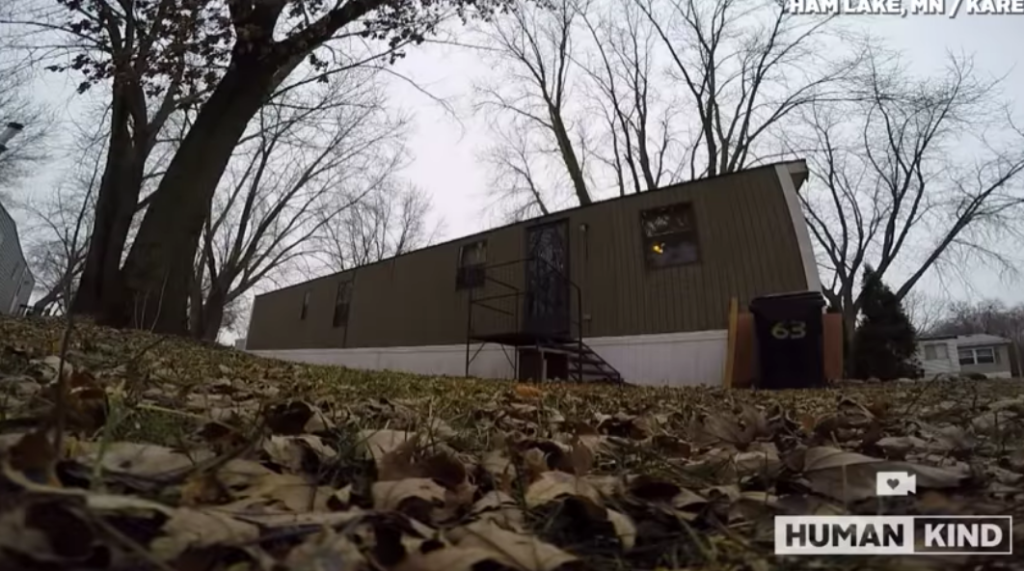
They Set Up a GoFundMe
Angela the pizza delivery driver, along with the help of the local community, banded together to find a way they could help Lee. They set up a GoFundME page that ended up going viral. People empathized with Lee’s story and were even more touched by the efforts a pizza delivery driver was willing to go through to help a poverty-stricken man. “ We got donations from as far as Australia,” said Angela.
In just two months, they managed to raise $32,000 for Lee. With this money, they bought him a brand-new container home. The furniture inside was all contributed by the community folk, and now Lee had a comfortable and safe place to live. One that included plumbing and electricity. His bedroom was just as big as the entire camper van he previously lived in. Above the bed were the messages, “ Peace, hope, love, believe, and joy.”
Read More: This Homeless Father of Five Can't Find a Shelter Currently Taking Men with Children

A Promise Kept
In the video posted on YouTube by Human Kind, you can see Angela giving Lee a big hug. She asked him, “Y ou remember when this started and I promised you we were going to help you?” To which Lee replied, “It’s wonderful . I’m so grateful for the people doing this.”
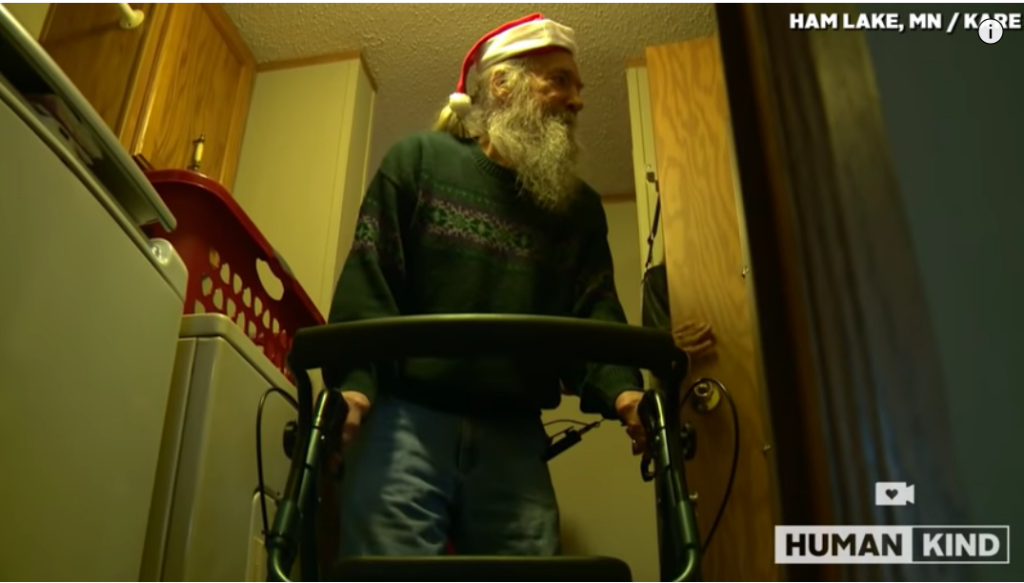
Compassion of a Stranger
It’s thanks to stories like this that remind one of the ability human beings have to be kind and compassionate. If more people were able to step back and see how a small gesture can save someone’s entire world, it would be a different place to live in.
Read More: Rich Girl Meets Homeless Ex. What Boyfriend Tries To Do Is Despicable – a Short Story
- “ Pizza delivery driver delivers new home to homeless man. ” USA Today. Chris Hrapsky. December 21, 2015.
- “ A 76-year-old man living in extreme poverty received a new home thanks to a pizza delivery driver who promised she was going to help him. ” Goal Cast . Sophie Tolias.
- “ Woman delivers pizza to rusty trailer: Opens the door and makes a shocking discovery. Newsner . May 29, 2018
The post Woman delivers pizza to rusty trailer: Opens the door and makes a shocking discovery appeared first on Secret Life Of Mom .
More for You
Stephen Hawking once gave a simple answer as to whether there was a God
Here's the Net Worth That Puts You in the Top 10% of American Households by Age
Vanishing Acts: 20 Hollywood Stars Who Faded from the Spotlight
Fact Check: Online Ad Claims TBN Canceled Mike Huckabee's TV Show After He Left to 'Pursue a Greater Purpose.' Here Are the Facts
Good Riddance to The Good Doctor
17 Unusual Mormon Rules You Won’t Believe Are Real
I'm a boomer and will never be able to retire. At 62, I'm already using my Social Security money.
Americans are finally catching on to Costco's tricks — here are 15 to watch out for so you don't get fleeced on your next trip
The Only Major Actors Still Alive From Gilligan's Island
“He never says action, and he never says cut”: Morgan Freeman Had to Beg Clint Eastwood to Direct 1 Movie Starring Matt Damon
8 Things Poor People Waste Money on That Middle Class and Upper Class Do Not
17 Brain-Breaking Photos That Are So Confusing, They Gave Me A Hangover
Donald Trump Handed Election Loss In Texas
Indiana Fever Head Coach Sends Message To WNBA Refs About Caitlin Clark
Pat Sajak Hilariously Loses Control After “Wheel of Fortune” Contestants Celebrate Incorrect Answer: ‘No, No, No!’
16 signs your body is telling you something is wrong
Julia Louis-Dreyfus Solved One Of Seinfeld's Biggest Problems Using Jerry's Fridge
31 Incredible Coincidences And "Small World" Moments That Left People Totally Stunned
18 Completely Insane Movies That Made Viewers Sick
'I don't hide it': This Google employee in NYC makes a six-figure salary — but lives like she's broke to make ends meet. How to make her strategy work for you

IMAGES
VIDEO
COMMENTS
The findings appear in the Sept. 23 issue of Science. The surprises come as the hardy, long-lived spacecraft approaches the edge of our solar system, called the heliopause, where the sun's influence ends and the solar wind smashes into the thin gas between the stars. "These are just the most recent of many surprises Voyager has revealed in its ...
Voyager 1 has yielded revelations about our Solar System no one could have predicted. Currently, Voyager 1 is more than 23.4 billion kilometers or 14.6 billion miles (and gaining, most of the time ...
Cosmic Revolution. Voyager Spacecraft: Shocking New Discovery In Space. Posted: February 28, 2024 | Last updated: February 29, 2024. In a new study, a team of physicists led by the University of ...
Voyager 1, the spacecraft famous for beaming back striking photos of Jupiter, Saturn and their moons more than 30 years ago, has made still another surprising discovery: the existence of an ...
By NASA's Jet Propulsion Laboratory March 16, 2024. Artist's illustration of one of the Voyager spacecraft. Credit: Caltech/NASA-JPL. NASA's Voyager 1 has been sending non-usable data to Earth since November 2023. Engineers detected unusual signals in March, revealing a full memory readout of the onboard computer, offering clues to resolve ...
Voyager 1's Shocking Discovery: A Signal from the Alien!Embark on an incredible journey with NASA's Voyager 1, the farthest human-made object from Earth. In ...
May 26, 1993. Article. Nearly 15 years after they left home, the Voyager 1 and 2 spacecraft have discovered the first direct evidence of the long-sought-after heliopause -- the boundary that separates Earth's solar system from interstellar space. "This discovery is an exciting indication that still more discoveries and surprises lie ahead for ...
Note: Because Earth moves around the sun faster than Voyager 1 is speeding away from the inner solar system, the distance between Earth and the spacecraft actually decreases at certain times of year. Distance from Sun: This is a real-time indicator of Voyagers' straight-line distance from the sun in astronomical units (AU) and either miles (mi ...
Voyager 1 followed on Sept. 5, and the two space probes began charting the far reaches of our solar system. The two probes are still operating as NASA's longest international mission, and are ...
Over the past three years NASA has shut down heaters and other nonessential components, eking out the spacecrafts' remaining energy stores to extend their unprecedented journeys to about 2030. For ...
Voyager 1 launched from Cape Canaveral in September 1977 and is now the farthest spacecraft from Earth, traveling in space at about 14.5 billion miles (23.3 billion kilometers) away. It would take ...
The spacecraft has been sending information home for 45 years. On Friday morning, NASA announced that the probe had reached interstellar space. Scientists found that it exited our solar system on September 12th of last year. The probe is now in the Heliosheath — the outermost layer of our sun's atmosphere.
Voyager Spacecraft's Shocking New Discovery In Space. Some of the most incredible discoveries in human history have been found by the two Voyager spacecr...
Strange signals from venerable probe has NASA baffled. It's never too late for a Voyager 1 mystery in deep space. Spending 45 years traversing the solar system really does a number on a spacecraft ...
"Voyager 1 crossed this boundary in 2012; Voyager 2 crossed it in 2018 — and, since that time, were the first spacecraft ever to make direct measurements of the interstellar medium."
It is has gone 14.5 billion miles (23.3 billion km) away, reports Space.com. It is an iconic probe and has sent hugely important data back to NASA since launch. But now, the new strange data sent by the Voyager from the edge of the Solar System has left scientists shocked as till date there has been no significant errors reported by the probe ...
Voyager Makes Shocking Discovery After 45 Years in Space. On Aug. 20, 1977, an extraordinary spacecraft left this planet on a journey like no other. Voyager 2 was going to show us, for the first time, what the outer solar system planets looked like close-up. Reaching milestones that have paved the way for future exploration, the Voyager Mission ...
Alexander Yuryevich Pichushkin (Russian: Алекса́ндр Ю́рьевич Пичу́шкин; born 9 April 1974), also known as the Chessboard Killer (Убийца с шахматной доской) and the Bitsa Park Maniac (Битцевский маньяк), is a Russian serial killer who is believed to have killed at least forty-nine people, and possibly as many as sixty, between ...
USSR, reacting to discovery of ring around Jupiter by Voyager spacecraft, claims joint credit; contends that Kiev University astronomer S K Vsekhsvyatsky predicted existence of ring 19 years ago ...
Sun 30 May 2021 21:00. BBC Two. Sat 5 Jun 2021 14:15. BBC Two except Northern Ireland & Northern Ireland HD. Wed 7 Jul 2021 01:00. BBC Two.
THE construction of a proposed $1 billion professional soccer stadium in the heart of Indianapolis has hit a major hurdle. Developers Keystone Group broke ground on the downtown site in 2023 with the intention of building a 20,000-capacity home for the USL Championship team Indy Eleven, only to stumble upon masses of human remains.
Star Trek: Discovery's five-year mission is at an end, but Michael Burnham may not be around to make the voyage home. As seen in the new trailer for the show's series finale, the USS Discovery 's ...
Authorities were dispatched to a home on April 17, about the cardiac arrest of a teenager, identified as Kyneddi Miller. When deputies arrived on the scene, they described the teen's appearance as 'shocking.' The criminal complaint states that Kyneddi's body was 'emaciated to a skeletal state,' WSAZ reported.
Little People, Big World's Zach Roloff and Tori Roloff made some surprising comments about what led up to them getting married. Little People, Big World season 25 aired from February to May 2024 ...
A new study estimated there is enough lithium in the state's wastewater to meet up to 40 percent of domestic needs. But experts are concerned the discovery will be used to justify more fracking.
A recent plot revealed something unexpected in General Hospital that made everyone question Ava's future in the show. According to recent General Hospital spoilers, the upcoming week is going to ...
Canadian actor (Jericho, Ghost Whisperer, Switched at Birth, Star Trek: Discovery, Star Trek: Lower Decks) February 25 Charles Dierkop: 87 Actor (The Naked City, Gunsmoke, Police Woman, The Deerslayer). He made guest appearances in Voyage to the Bottom of the Sea, Lost in Space, The Man from U.N.C.L.E., The Andy Griffith Show, and more.
The post Woman delivers pizza to rusty trailer: Opens the door and makes a shocking discovery appeared first on Secret Life Of Mom. Secret Life of Mom.